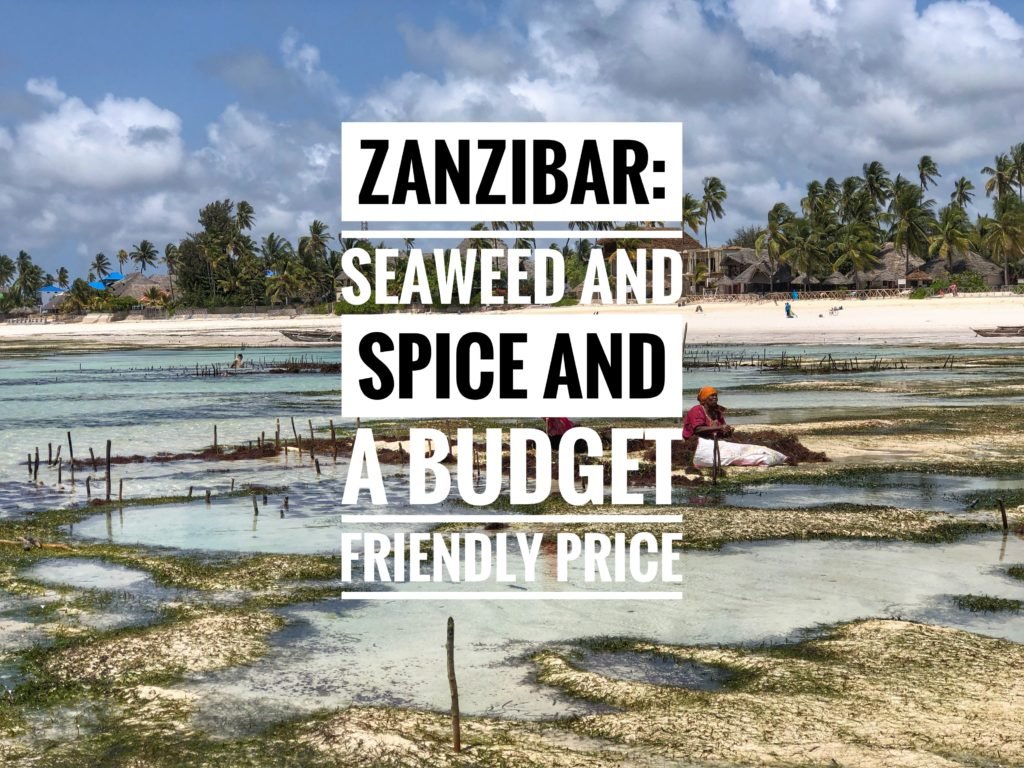
Touching down amidst towering coconut palm trees that seemed to carpet the landscape of this sapphire, cerulean, and cyan enveloped island which beckoned us to exclaim, wow! Yes, we’d reached the island of Zanzibar for our first stop in Africa. Zanzibar is one of those magical place names, that doesn’t quite seem like a real place until you’re there. It’s actually an Arabic word that translates to “the coast of black people.” The island is actually a semi-autonomous region of the country of Tanzania, but it maintains an entirely different perspective in both its people and its landscape with a 99% Islamic population. Zanzibar also produces some very atypical but legendary agricultural products, and employs the “Hakuna Matata” approach to life more efficiently than anywhere else. Oh, yes. And, it certainly has those pristine powdery beaches we have long fantasized about.
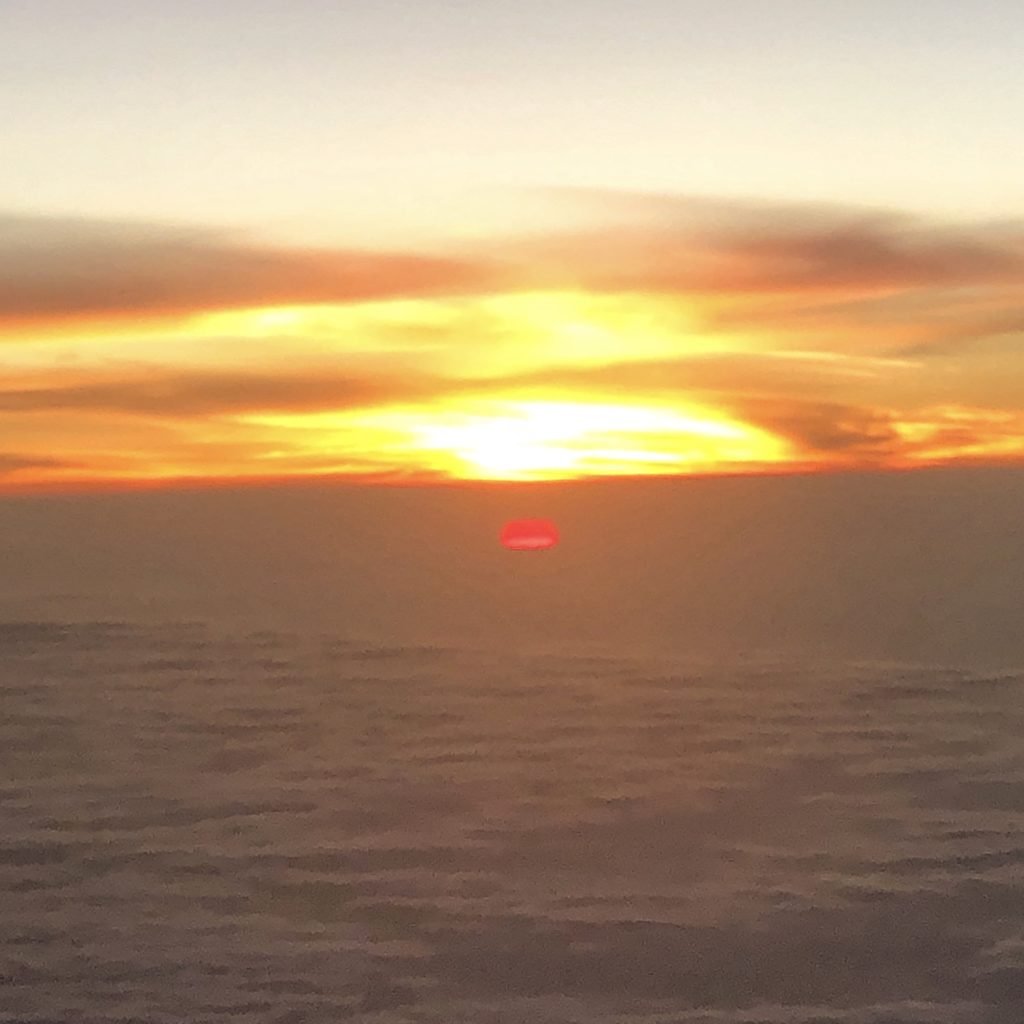
An extraordinary African sunrise as seen from the plane.
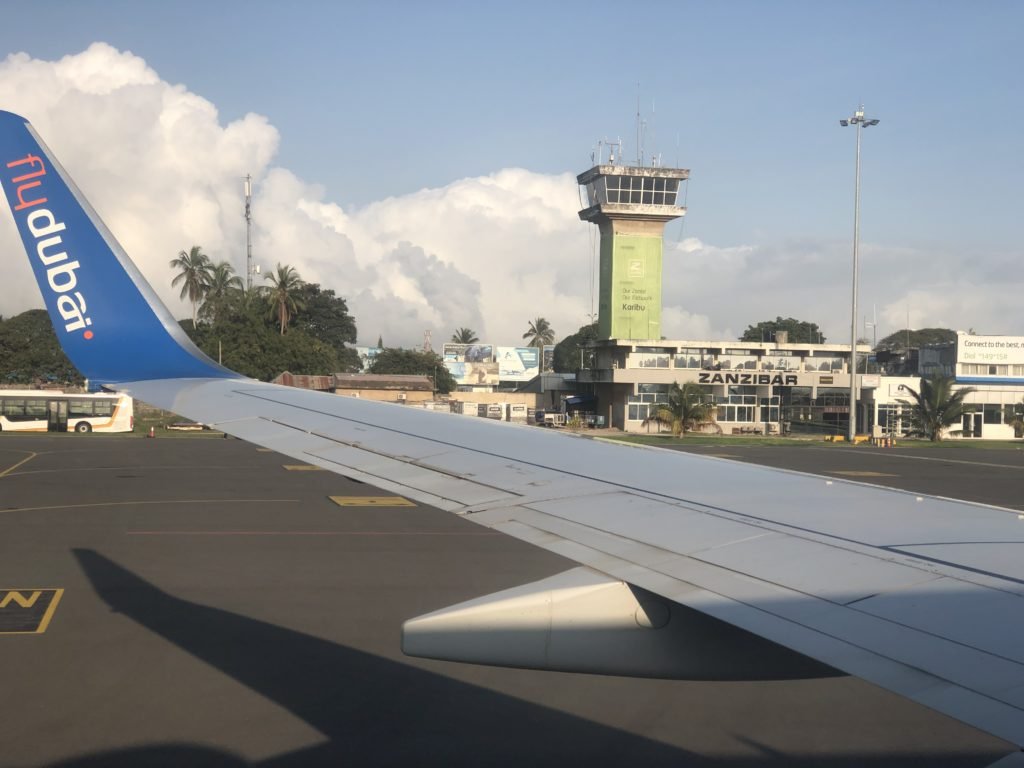
Moving into the airport, as US-citizens we got the luxury of being the only citizens in the world to plop down double for Tanzanian visas ($100 per person). Not sure what we did to piss these people off… Once through the speedy and efficient immigration we went to collect our backpacks. Greg’s was already riding merrily on the belt… while Mandy’s was nowhere to be found. We watched the baggage claim belt go round-and-round with optimism, tinged with a dash of impending doom. Until…No more bags. The remaining passengers scurried off to enjoy Zanzibar with their roller bags kerplunking behind. As the color drained out of Mandy’s face, we received our first “Jambo!!” from a helpful airport attendant who approached us ready to help. The looks on our faces must’ve been quite clear. We were guided to the lost luggage office and 20 minutes later, as we were preparing to fill out our missing homebackpack report, Mandy took a last glance at belt and…her lone bag circled like a missing child riding a carousel. The attendant learned the bag had just been tucked in the back of the plane’s cargo hold and overlooked, but regardless she squealed when she saw it and gave it a firm talking to.
Rolling through security, we expected to take part in Tanzania’s new ban on plastic bags. We’d been warned not to take any bags into the country and that searches we common. But, were disappointed they didn’t even look for any plastic bag contraband, which we’d made sure to clear beforehand. Tanzania is thankfully and impressively one, on a very short list of countries to have completely banned plastic bags. It followed the lead of neighboring Kenya and Rwanda. They are certainly way ahead of most of the rest of the world in enacting this ban.
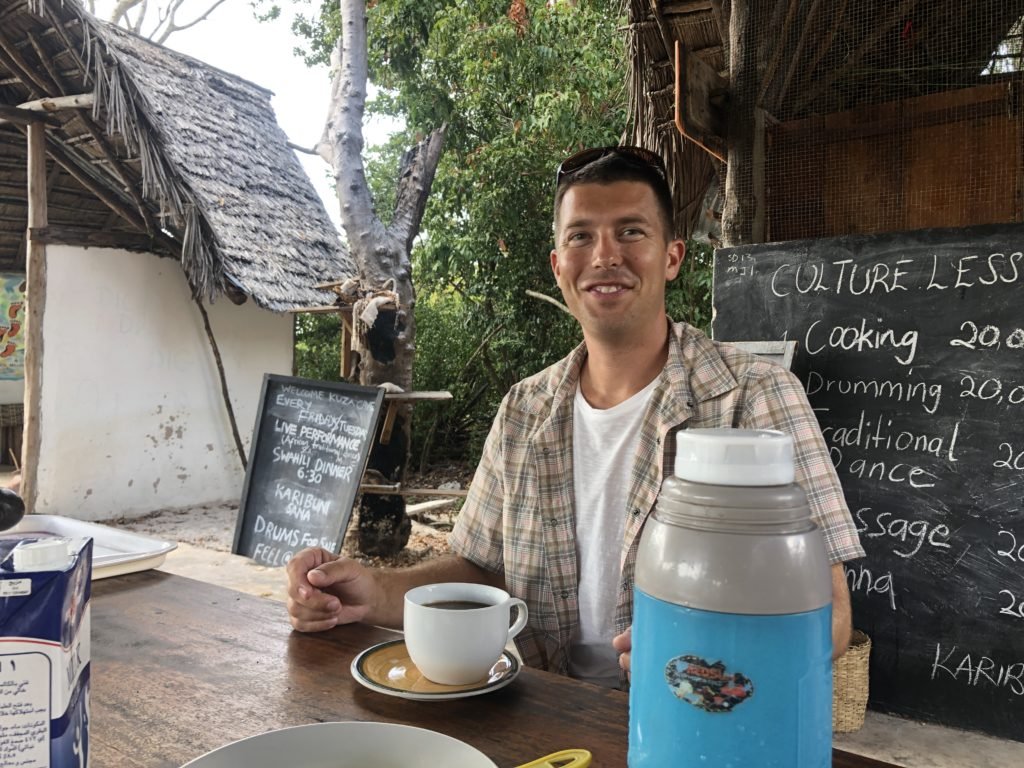
Kuza Cave
From the airport it was off to the east side of the island in a ridiculously overpriced $40 taxi ride for a five-night stay in our own little private jungle hut at Kuza Cave. Kuza Cave Culture Center is an NGO which protects the cave and provides cultural programs like Swahili dancing, drumming lessons, & cooking lessons to the local community. We were welcomed with tea and coffee upon arrival.
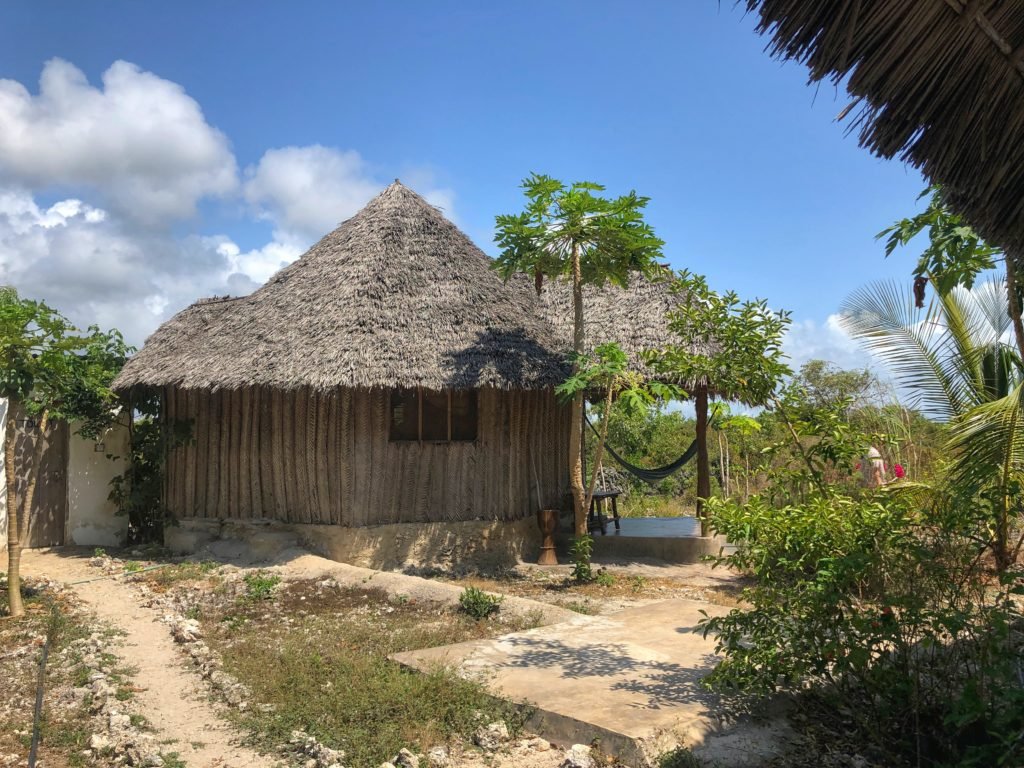
The outside of our hut. Our favorite part was the hammock swinging out front. Since there was only one hammock, we had to set a timer and do 30-minute rotations between us so we wouldn’t bicker over using it. The hut was $28/night…not exactly cheap for what it was but still a bargain in Zanzibar. Plus, a portion of our payment was supposed to go back to the community, which was something we were happy to support.
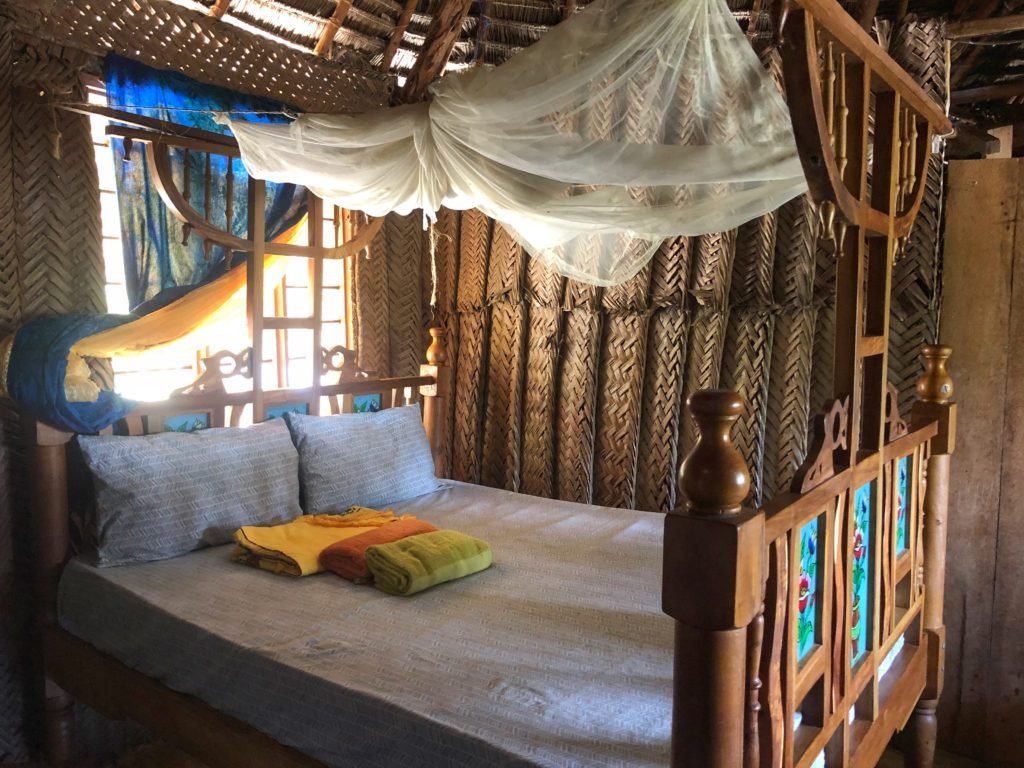
The inside. The bed was spartan but surprisingly comfortable and the mosquito net mostly effective although a few of those little bastards snuck in despite the number of binder clips and Bobby pins we used to seal it off. (Note: Binder clips can be one of your best friends when you travel…useful for everything!)

The fully functioning western style toilet. The shower, on the other hand, not so much. While we were not expecting hot water, we were expecting more than a trickle to emerge from the spigot. Also, add to this at least once daily, the water was shut/went off entirely. We were guessing this was all part of the ‘bush experience’. Thus, we learned the simple but effective art of “bucket showers”.
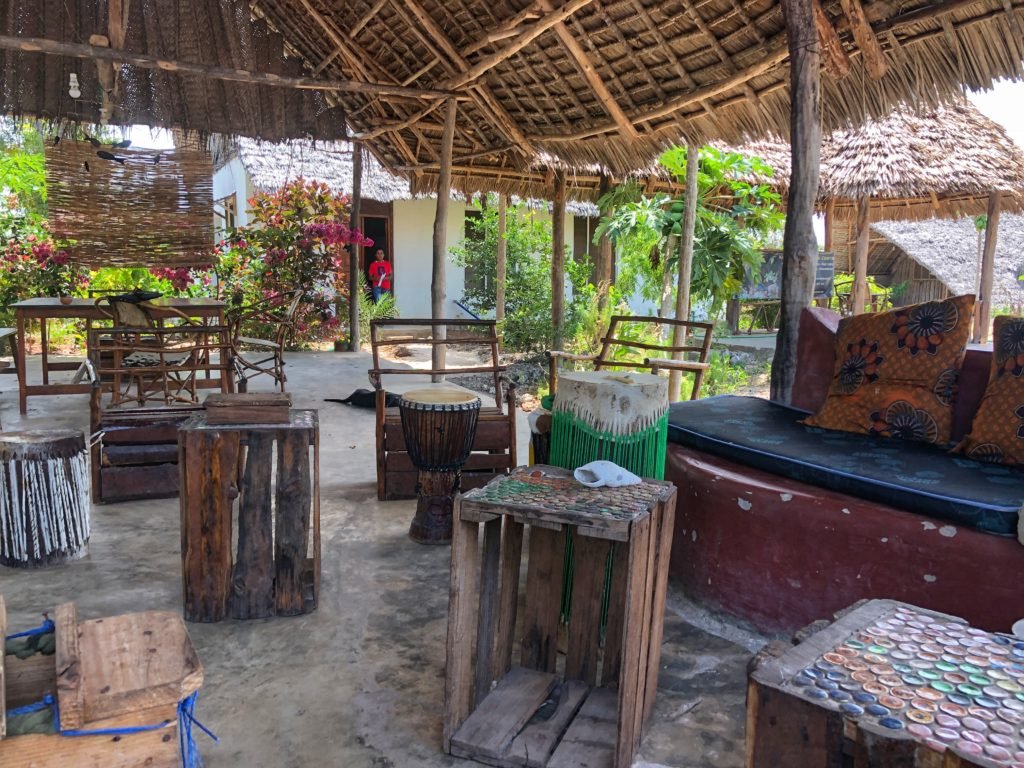
The community area where we ate our meals, enjoyed the music and just relaxed, trying to adapt to a world entirely off the grid. For the most part, it was just us and the overstaffed staff, although there were a couple guests in the neighboring hut on a couple of the nights.
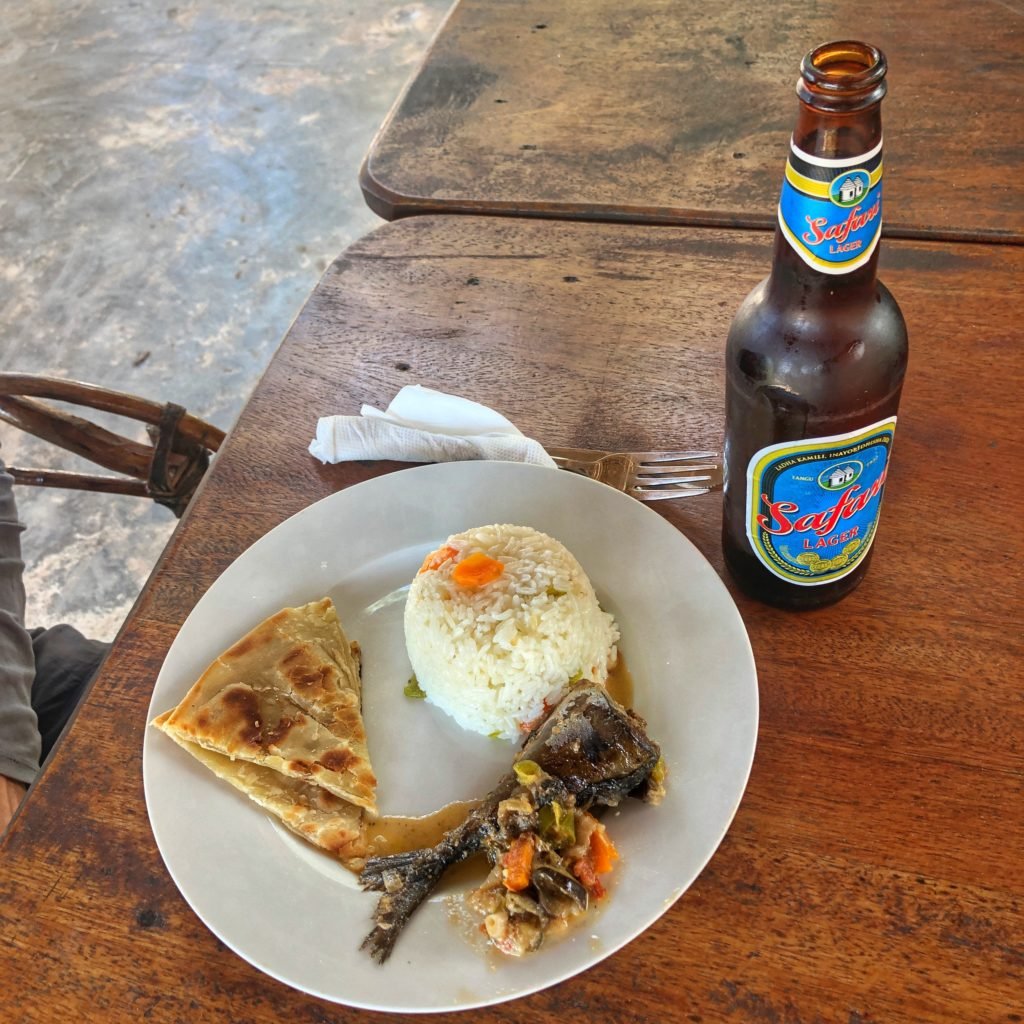
Breakfast was also included, but basic with scrambled eggs (white yolks!), toast and fruit—usually passion fruit, sweet bananas or mango. One of our lunches from the cave is pictured. It’s a standard Zanzibari meal (~$4.25) including rice, vegetables and fish. Funnily, Greg had his fish stolen from his plate moments after being served by the sly and very opportunistic community cat. That cat was definitely on our naughty list for the rest of our stay.
Kuza Cave itself was a big part of the draw to staying on the property. At the base of the ancient sacred cave there is a crystal clear pool, about eight feet deep in places, formed by a subterranean river, in which you can swim and even snorkel in. The water is so clear it’s sometimes hard to tell where it begins. Visitors who book a tour pay $8/head to see the cave, but because we stayed there we had full and anytime access. It reminded us a lot of the cenotes in the Yucatán peninsula. Most mornings we woke up to take a dip around 7 while (impatiently) awaiting our coffee and breakfast which was usually served 9ish… this despite the four live-in staff people and no other guests (Hakuna Matata.)
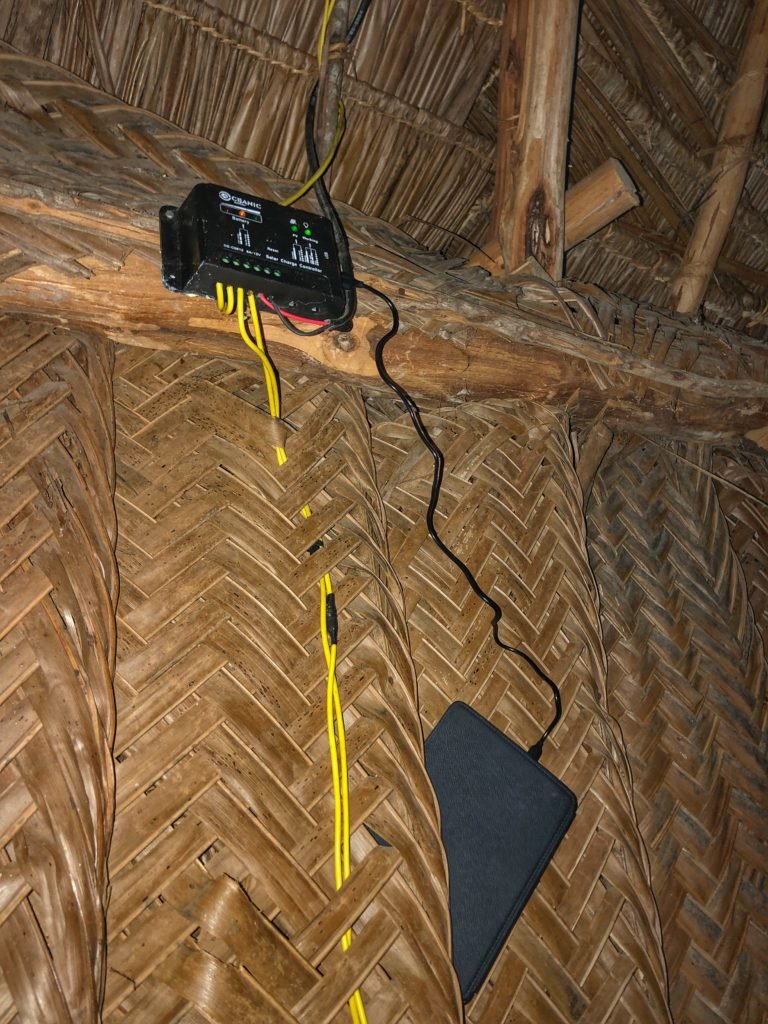
We charged our devices using a car battery in our room.
We spent the afternoon lazily in the community area enjoying the Swahili drums and some beer.
This white boy from Oregon even gave it a go.
Ziwi, the skilled drummer in the middle, was on the staff and his main job seemed to be showing off his drumming skills. During the Tuesday performance, Greg was pulled up to join in for two songs. Not somebody who is known for his rhythmic displays, he tapped the drum in complete discomfort hoping for a quick song. However, one song turned into two songs, before he could make his embarrassed exit. Mandy, on the other hand, when pulled to dance, took full advantage of the opportunity to strut and shake her Indiana white girl moves… moves which ended up looking more like “The Twist” than anything remotely Swahili or booty shaking.
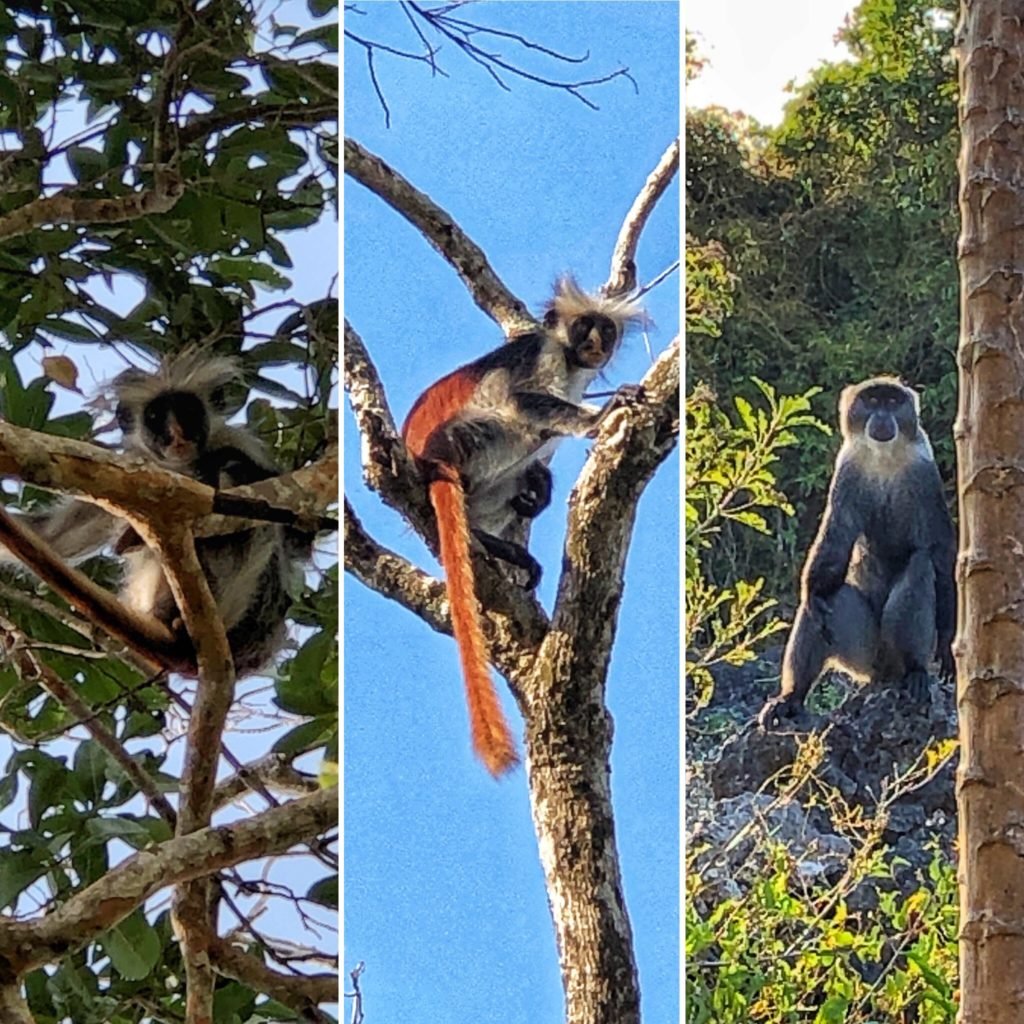
Oh, and who can forget our new best friends and favorite sight which hung out in the trees in the surrounding bush? The Red Colobus monkeys and baboons would visit regularly and were everywhere. We found out later that the red colobus monkeys are endangered, which made us even more angry that the facility wasn’t enforcing their own logical rule of tying up their dogs, which were constantly terrorizing the monkeys.
To announce their presence they would make loud hooting sounds day and night. These sounds, accompanied with the bawling cries of the nocturnal bushbabies (real name: galagos), which are a cat-sized mammals with a dog-like faces, certainly gave us some surprises in the middle of the night. Although we grew mostly accustomed to sleeping with this cacophony, there was one night when Mandy was having a particularly vivid (anti-malaria pill induced) dream when one monkey landed on our roof and let out a piercing cry jolting her awake in a complete panic. This is why anti-malaria pills (which commonly cause crazy dreams) and sleeping in the bush don’t necessarily mix for newcomers. Whoohoo! What a good primer for our safari!!
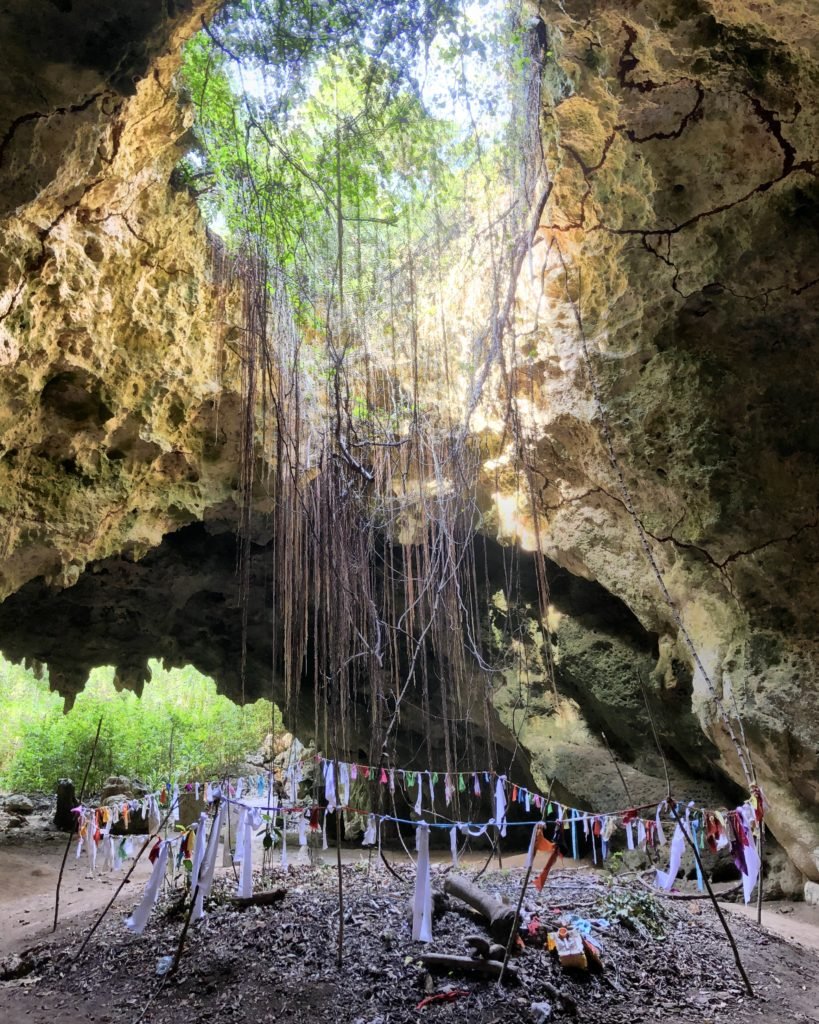
Kuumbi Cave
The proprietor and owner of Kuza Caves, an Australian transplant to Tanzania, kindly prompted us to join her and two of her Tanzanian employees on a ‘very’ ad-hoc tour (coupling it with a rudimentary staff training opportunity) of two nearby caves. She was aiming to add these two additional caves to the Kuza Caves touring repertoire. Information was light, but we did enjoy the experience of seeing these ancient places we likely never would have been able to see otherwise. The first of the two caves was Kuumbi Historic Cave which included an informational plaque describing its important cultural history and recent excavations. With a natural spring inside, it’s discovery astonishingly confirmed that humans have been using this cave since 20,000 BC… making it an important sight of early human life, as well as for more recent and continuing sacred rituals. It was only excavated in 2004. The findings included many Stone Age tools.
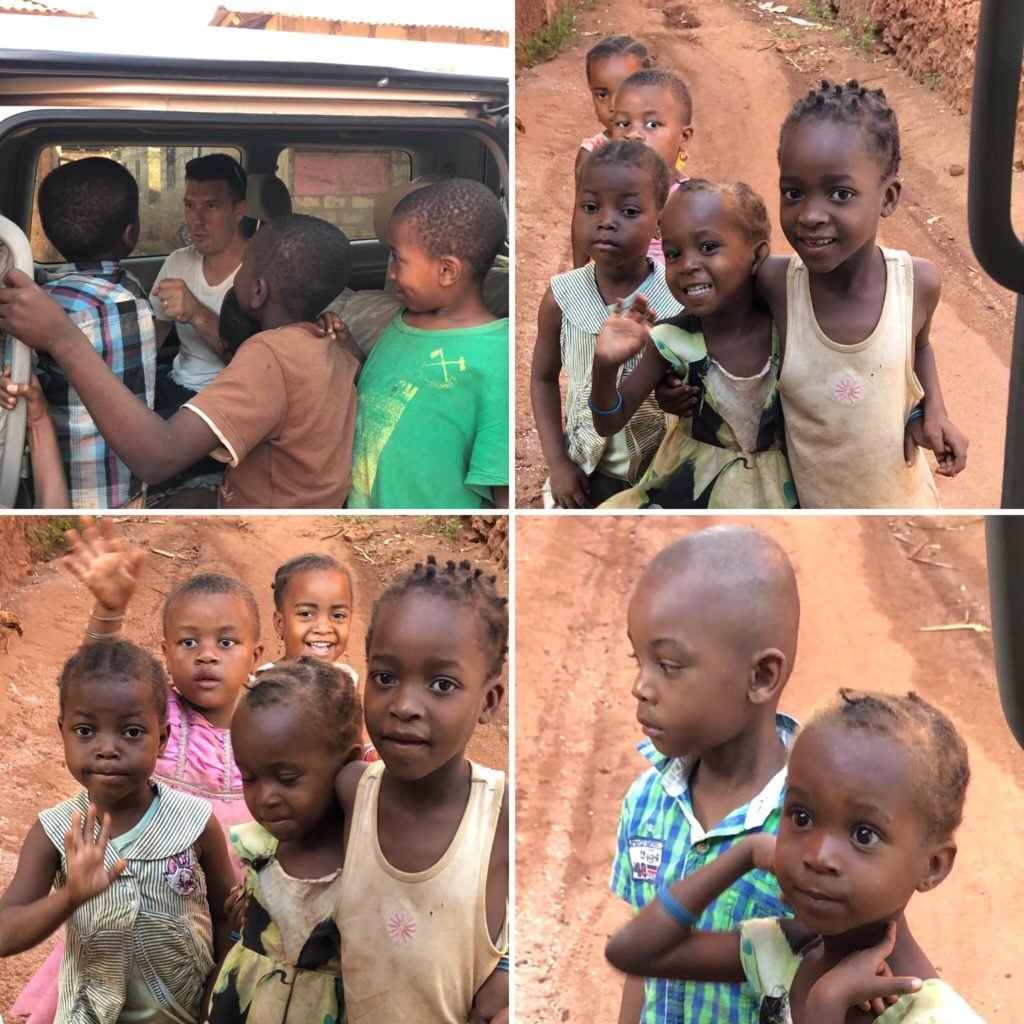
Off to the second cave on our impromptu tour, and rolling into our first off-the-grid African village. We didn’t even really get why we were there, but all of a sudden we entered mud-brick homes, and what looked like a village lost to the modern world. A dozen+ kids suddenly came running jumping up and down to our mini-van screeching “Mzungu! Mzungu!” (white people, white people.) When Kelvin, one of our Tanzanian tour trainees, rolled open the van door, the screeching halted and we were greeted with virtual silence and stares… with at least ten sets of adorable and curious little brown eyes evaluating us. Kelvin jumped out and before long the group of kids started high fiving him and chattering away in Swahili. We sat dumbfounded, never feeling so foreign. In the meantime, the kids’ excitement grew towards undoubtedly the highlight of the day and they started trying to maneuver their way into the van. One opportunistic kid immediately snatched an empty used juice box that lay on the van floor as if he had struck gold… a prized possession that was all his. Mandy jumped out and joined in on the excitement while Greg guarded the van.
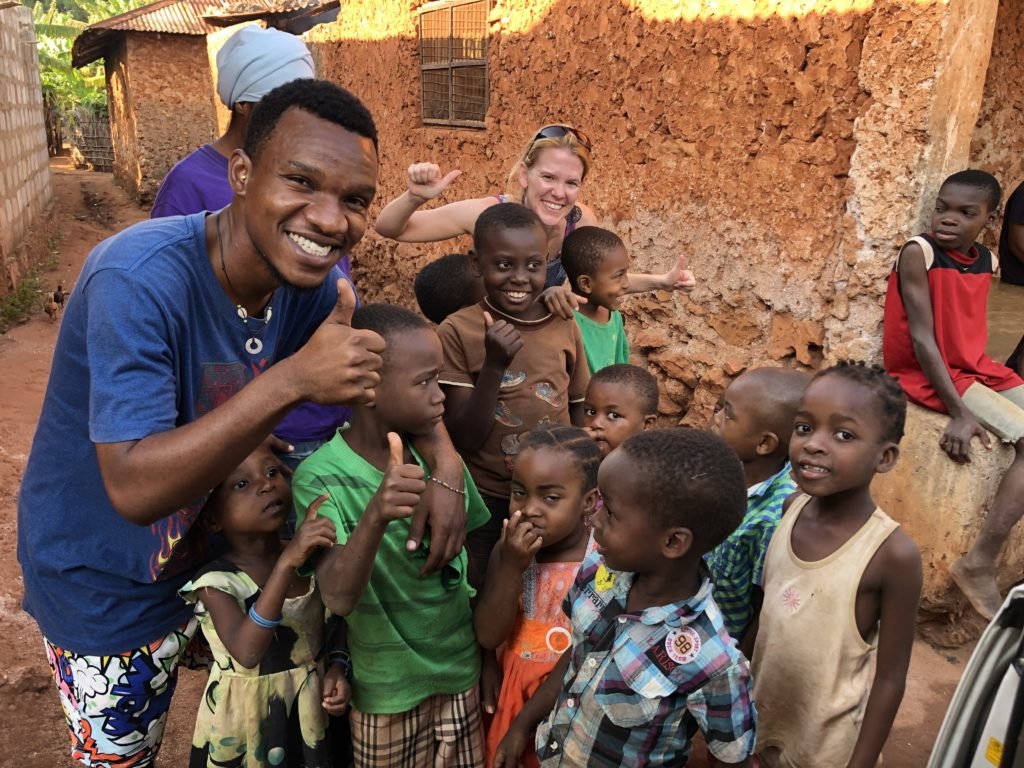
It was overwhelming, exhilarating, and perplexing to be around all these beautifully curious kids who were just excited to hang out with us two Mzungu.
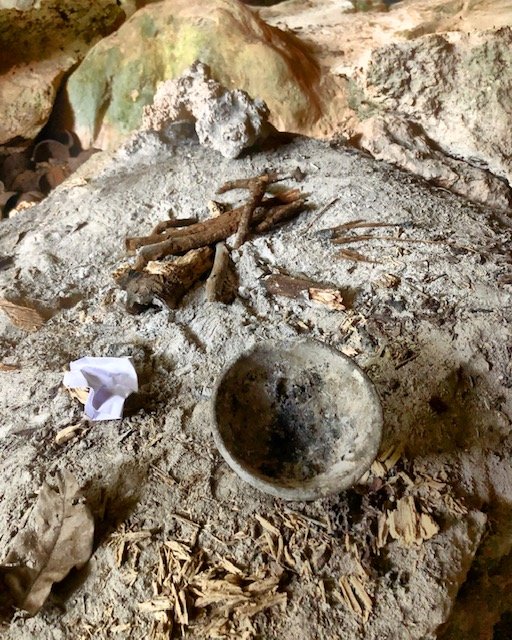
Mwanampambe Cave
It turned out the reason we had stopped at this village was to pick up a tour guide to lead our “cave tour” to the last cave. This “guide” turned out to be a village head honcho… a v.i.p., who had hopped into the van and proceeded to lead us to the other cave, Mwanampambe.
Entering into this cave, we immediately felt a difference in the air. This cave had a presence. It is still regularly used as a place of spiritual worship and prayer. At the top of the cave we found a clay bowl was laid out atop an orange and grey charcoal stained rock, along with some local roots and leaves… some still smoldering.
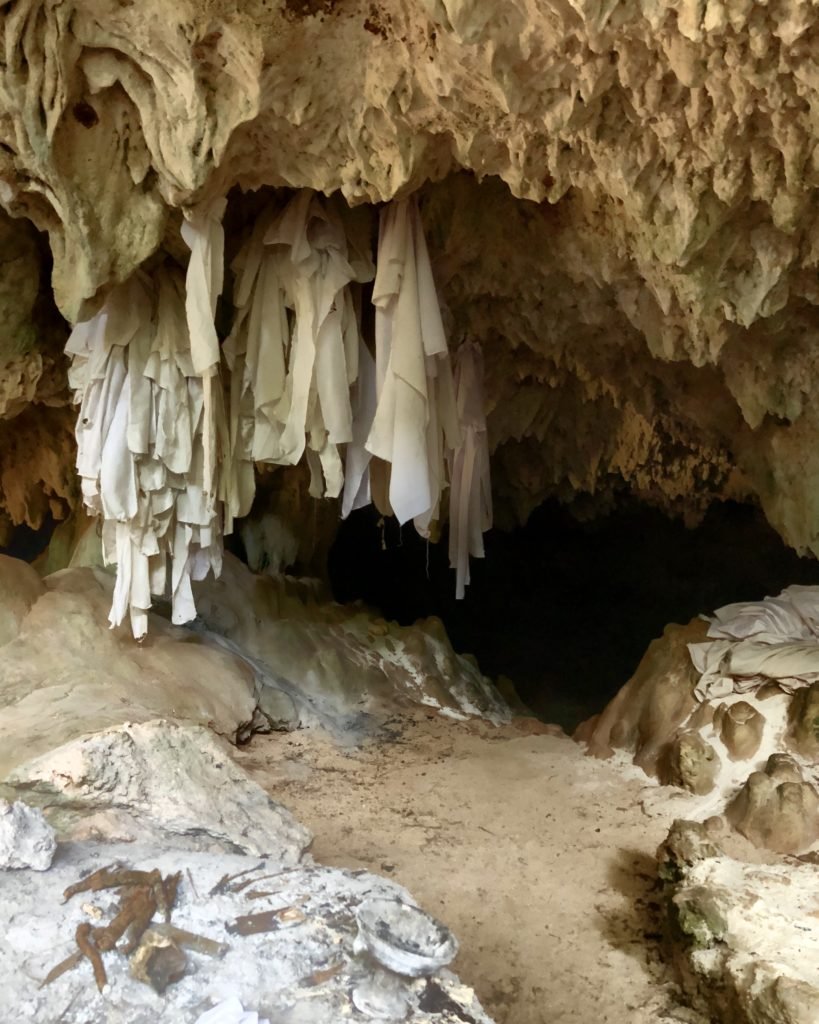
At this point, we were introduced to a young man there, who agreed to lead us further into the cave. The white cloths and sheets pictured were tied at the entrance, along with offerings of food like rice, as gifts to the spirits. The cloths were tied on by the person(s) who had used the cave to make a wish or prayer… it was believed that the cave had special powers or a connection to a force that could amplify prayers of protection or make them more powerful and effective. As this was a spiritual place, we first had to remove our socks and shoes before entering. Barefoot, we walked down into the darkness of the cave, using just our iPhone flashlight to avoid stubbing our toes on any rocks. After, hundreds of years of barefoot traffic the mud and dirt on the cave floor was as smooth as tile.
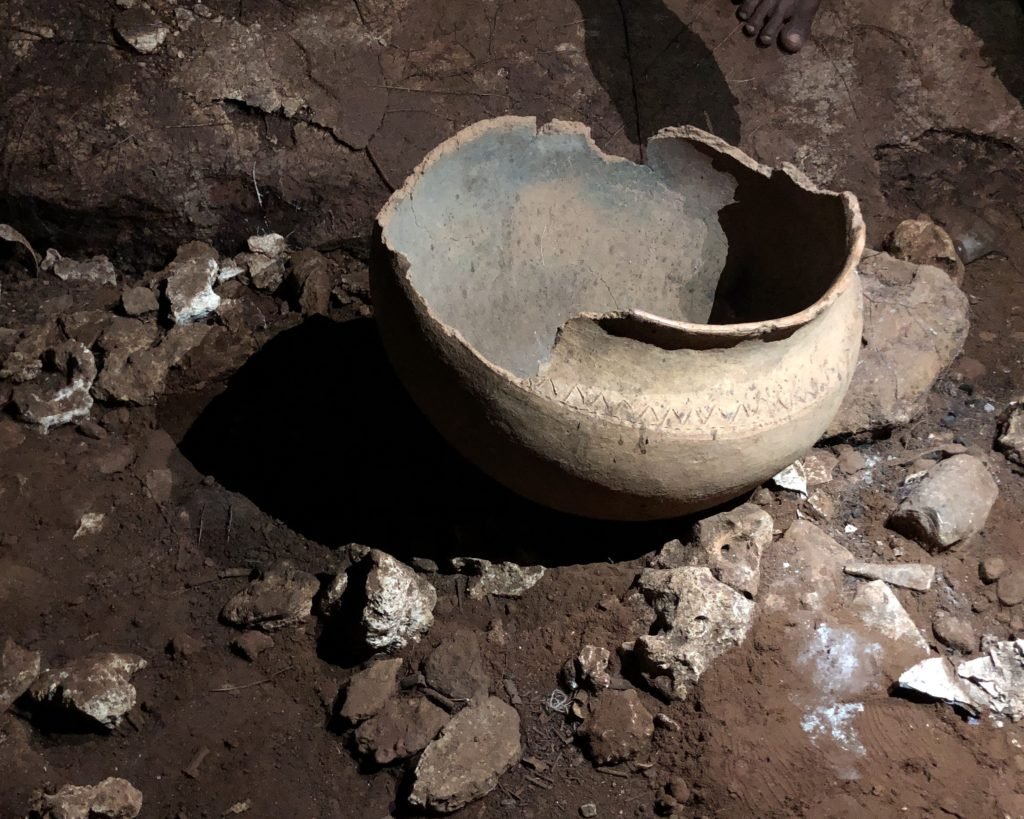
Towards the back of the cave we were shown, what was claimed to be a very old, clay bowl that had been used in ceremonies. We were told that ceremonies in this part of the cave typically involved people who wanted to invoke the spiritual forces to help protect and return a loved one back home from elsewhere.
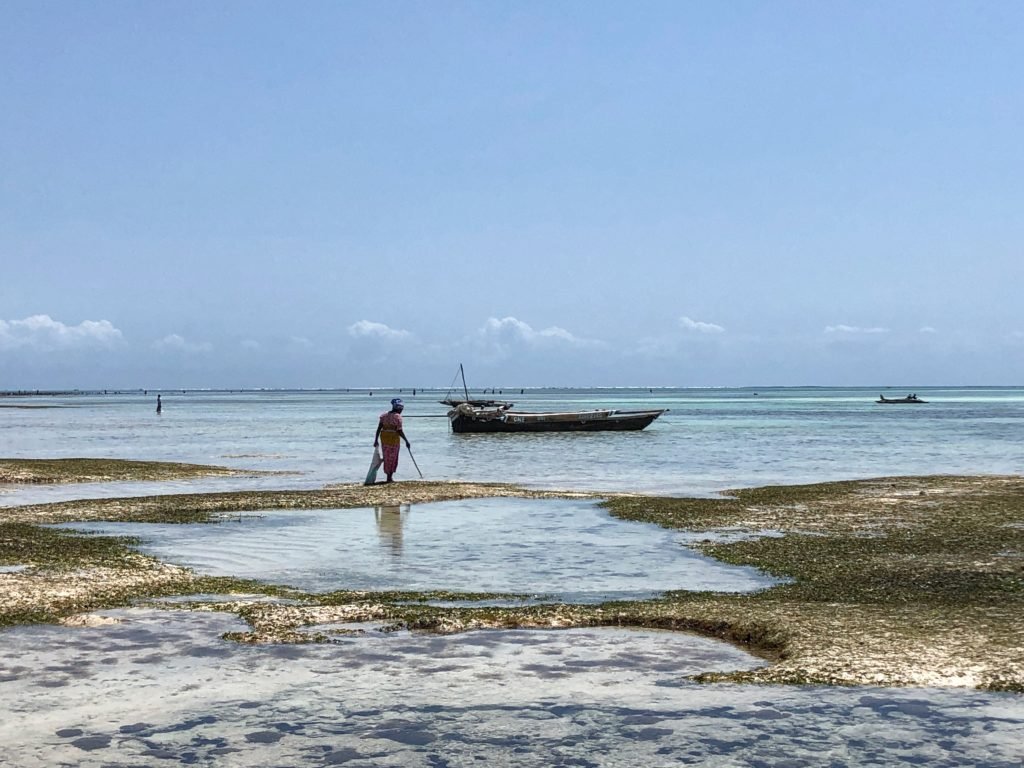
Jambiani Beach
First glimpses of the gorgeous waters in Jambiani. On Zanzibar, the tides are no what they seem however. We went two days in a row to the beach, unaware it was low tide at the time, and were astounded to find that the surf was at least a kilometer away. Returning to the beach one evening at about 5:00 pm we were totally shocked to find the waves had covered the kilometer distance and were crashing up onto the same beach we strolled down earlier with not a wave in sight. It was the most dramatic shift in tides we’ve ever seen. We also found that high tide is a much more pleasant time because you can much more easily swim and enjoy the surf, and, as a bonus, the touts are significantly reduced because the size of the beach is considerably smaller. They have nowhere to roam!

Speaking of touts, unfortunately there’s a lot of wrangling on the beaches in Zanzibar. Many of them are people trying to sell tours or services, the other is typically Masai men gone capitalist trying to sell a bagful of invisible goodies, which they promise is really good and really cheap. It’s challenging to dodge these people if you want any peace because they are seemingly very nice and approach you with big smiles, lots of “jambos”, and always wanting to shake your hand and engage you in conversation. The first few times when you are captured into these conversations is fun, but once the novelty wears off and it becomes incessant it becomes a different, and distinctly less fun aspect of trying to relax or enjoy the gorgeous beaches and setting.
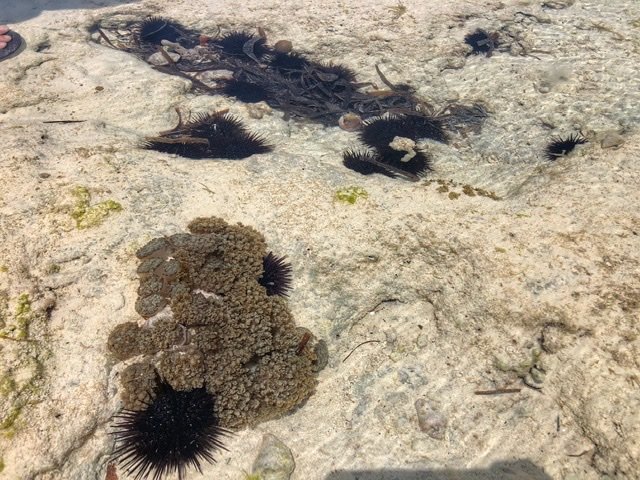
When it’s low tide, it’s important to note that there are urchins…everywhere in the sand and seaweed patches! When going for a walk in the tide pools we thought we had skillfully passed the urchin minefield, until Greg began hoping on one foot shouting, “Uh! Urchin!!” Greg got a good prick on his foot, but only one small tip of a spine, he was able to extract later without much trouble. It healed quickly with no issues.

And this is what the beach looks like at low tide. This unique tidal situation allows a special and very active seaweed farming industry to thrive. The seaweed farming got its start began in the mid-nineties. Interestingly, the industry is predominantly dominated by women, which actually has given them a lot of liberation and jumpstarted the local economy. It was fascinating to see how the tide dictated their work day schedules, with scores of women and some men, making their way (commuting) out to the seaweed farm plots and back in again at the changing tides.
Another interesting cultural aspect we picked up on is that on Zanzibar polygamy, is also a standard and common practice. The guide we hired to take us snorkeling said his father had two wives and 10 children. Also, and not incidentally, the divorce rate is also very high on Zanzibar. The divorced women do not get alimony or any compensation, and with the husband gone she usually loses her financial security. Thus, the seaweed farming has become a vital source of income for the women of Zanzibar, and has helped then accrue their own wealth and financial freedom despite any relationship woes.
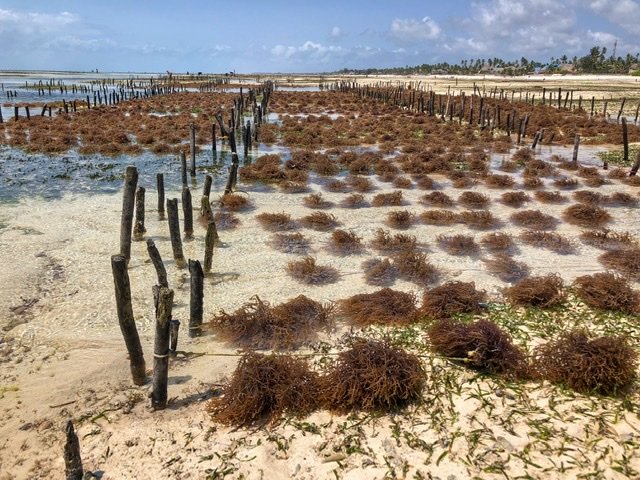
The seaweed is sold for export to China and SE Asia using their own plots. Seaweed takes three months to grow and sells for 2000 TZS ($.87) per kilo. One harvest makes them $30-$50 and there are usually eight harvests per year. There are at least three types differentiated by their color and some are more expensive than others. The seaweed is sold for its carrageenan content, with the different varieties producing higher levels of carrageenan. You can listen to more about the amazing seaweed farming economy on Zanzibar through the BBC.
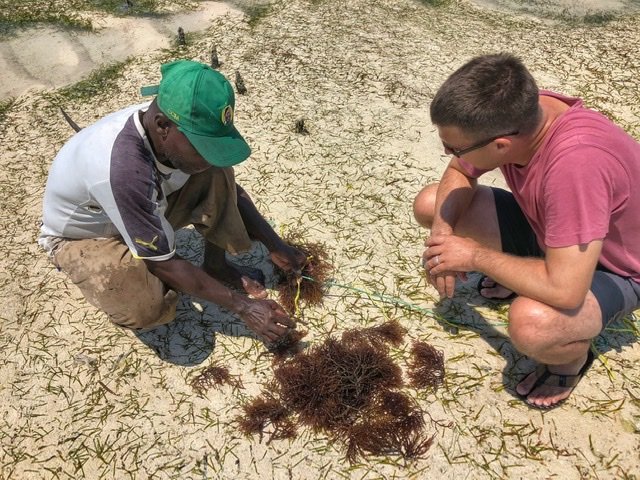
Greg even got a lesson from a local, and was instructed on how to tie the seaweed onto the string, which is then placed in the plot to grow over the coming months. Very sadly, with climate change, the waters around Zanzibar are warming and harmful bacteria are spawning and infecting the seaweed harvests, reducing the yields and putting the entire seaweed economy at risk.

Kids in Jambiani village. It was nearly impossible to pass a group without them waving and yelling “Jambo! Jambo!” to us.
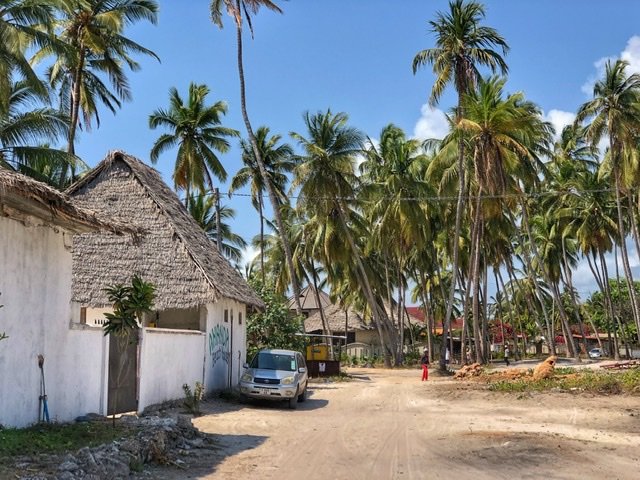
The village of Jambiani.

Yay!! We’re in Zanzibar!!!
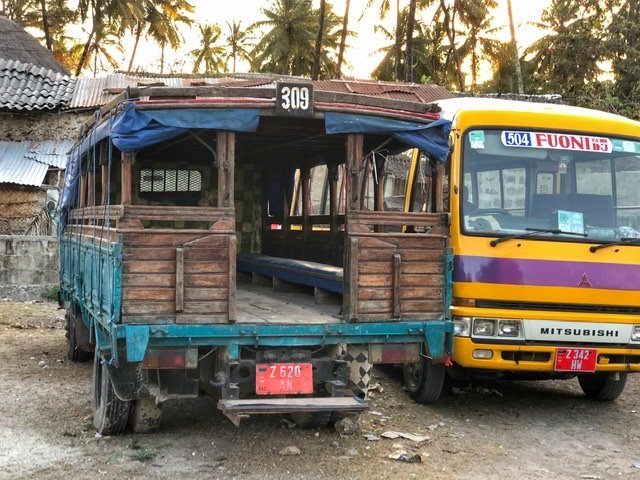
As mentioned, we took a ridiculous taxi ride from the airport to Jambiani for $40. Although, we typically try and avoid them, as they’re notorious for overcharging (not just in Zanzibar!) Looking for cheaper, more budget friendly options on Zanzibar leads you to the dalla dalla,which although there are at least three different kinds of dalla dalla this one was basically a converted pickup truck where you are shoehorned in with everybody else who all seem to be just ‘grinning and bearing it.’
Our first experience boarding a dalla dalla was certainly awkward. It was very full except for the two seats up by the cab, so we had to literally crowd surf through over piles of legs and curiously staring eyes to reach our, eh, “seats.” But… the ride was $.50 each and saved us a 45-minute walk so, there was that as a silver lining. We also took another dalla dalla (more of a mini-bus type not pick-up truck type) back across the island to Stone Town later on and ended up paying $2 for both of us(!) instead of $40 like at the beginning from the taxi.
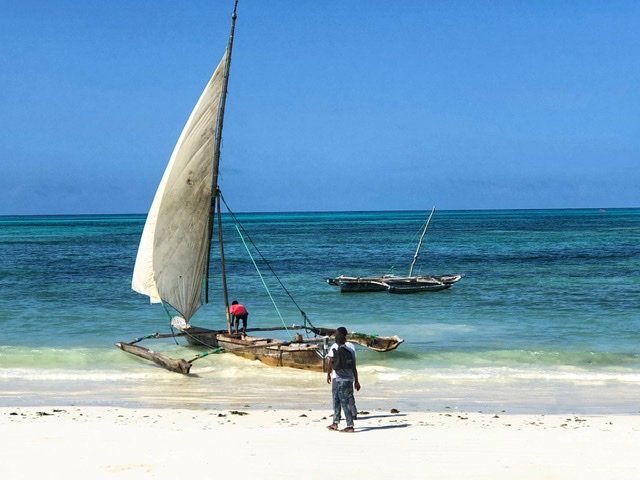
Another very popular mode of transportation in Zanzibar is the makeshift and traditional outrigger sailing canoe. We were lucky enough to take one out on a snorkeling trip with a couple of local boys who wrangled us on the beach for $17. The snorkeling was decent, but the trip out on this beautiful boat was the best part. The outrigger boat had not a motor or gear or manufactured piece on it. It was as pure and natural sailing as you can get! Even the sail was woven linen.
More shots of the beach at high tide.
The great thing about Zanzibar is that it feels authentic and real, despite being a notable tourist stop. We especially loved wondering through the village of Jambiani. Kids playing soccer in the street, locals frying fish on the door steps, and smile-accompanied jambos from everyone from two years old to ninety. A little girl who was all smiles when we passed.

In Istanbul, Mandy bought her first pair of polarized sunglasses ($10) of her life. Three weeks later, she looks for said sunglasses in the Indian Ocean. She was so sad to lose them, but felt comfort in the fact that some seaweed farmer, who undoubtedly had never seen polarized sunglasses, would be delighted with her score the next day.
Stone Town
Moving on, we took the local dalla dalla across the island to Stone Town. Throughout history, the Persians, Portuguese, Omani and British have fought to control the “Spice Island” of Zanzibar. It was seen as a gateway to mainland East Africa. In fact, the Sultanate of Oman was the first to trade slaves, cloves and ivory from the East African mainland through the island’s main port of Stone Town. Visiting bustling Stone Town today is visiting history from all eras…from the ancient spice trade, to the haunting slave markets, to the more recent birthplace of Queen’s Freddie Mercury.
Free Looking Shop!! What a deal!!
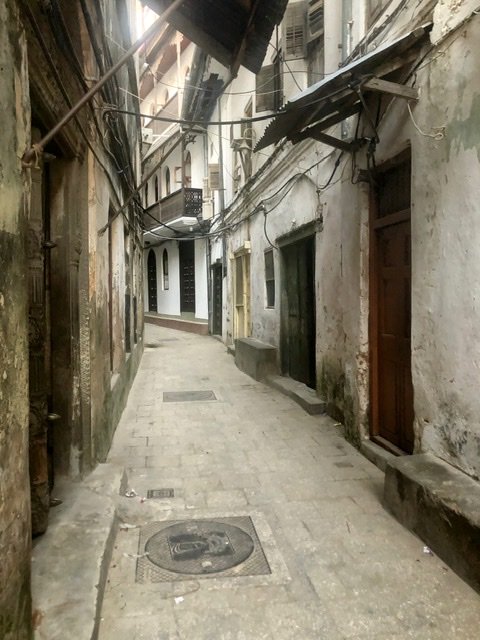
Getting lost in the winding alleyways and streets of Stone Town was one of our favorite parts.

Outside the Persian Hamamni Baths from 1870.
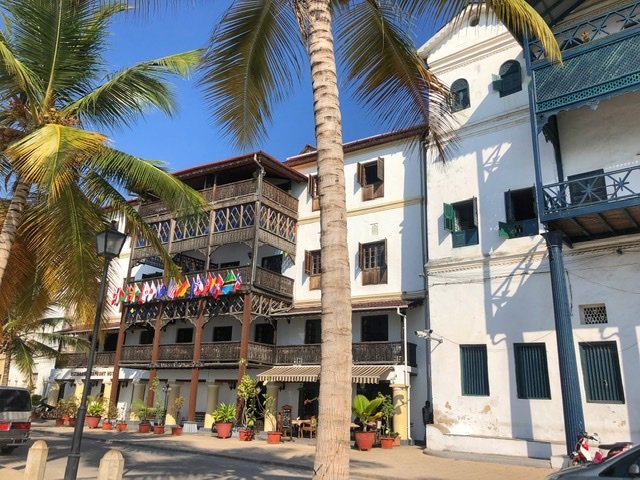
We loved this hotel next to the Old Customs House. The architecture is a blend of Perisan, Indian, Arabic and European in Stone Town. So interesting. Parts of it felt like New Orleans to us.
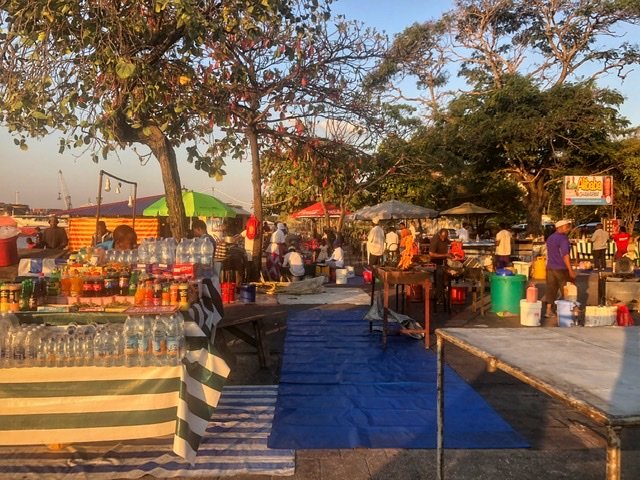
The street market, where all foreigners get charged an astronomical rate. This happened one too many times in Tanzania so we learned quickly not to go to restaurants that don’t have menus. At one restaurant we got charged at least triple for some rice, spinach, chicken and two bananas. ($11) Being charged a little extra is fine, but 3-4 times is complete extortion. Got very frustrating.
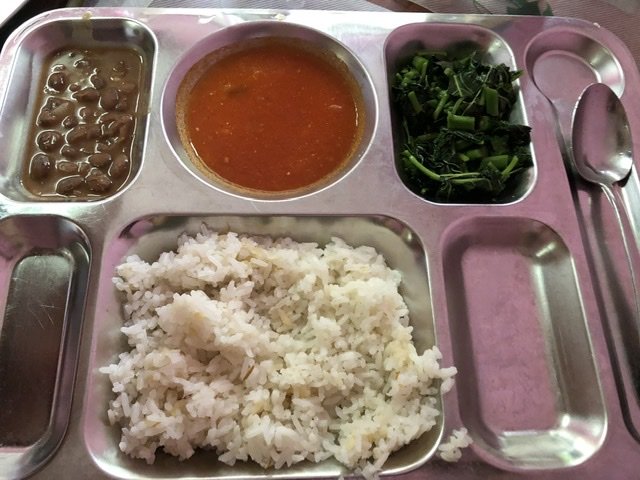
This elementary school tray was one example of a meal that was priced correctly. Basic rice, beans, spinach and sauce was about $2.50/each, which we were happy to pay.
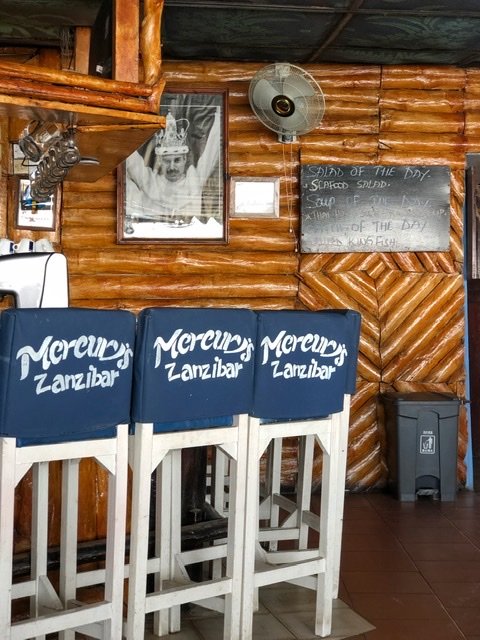
Stone Town is the 1946 birthplace of Queen’s Freddie Mercury, then Farrokh Bulsara, so naturally there is a restaurant on the water devoted to this famous icon. We also visited his childhood home where he lived for eight years attending an Anglican school. In Zanzibar, there is still a sense of pride in him although in this conservative Islamic society, certain elements of his lifestyle are “problematic.” In fact, gay sex was recently made illegal in 2004.
A description of Stone Town would not be complete without mention of the stunning centuries old mahogany and teak wood doors that grace the entryways into houses and businesses.
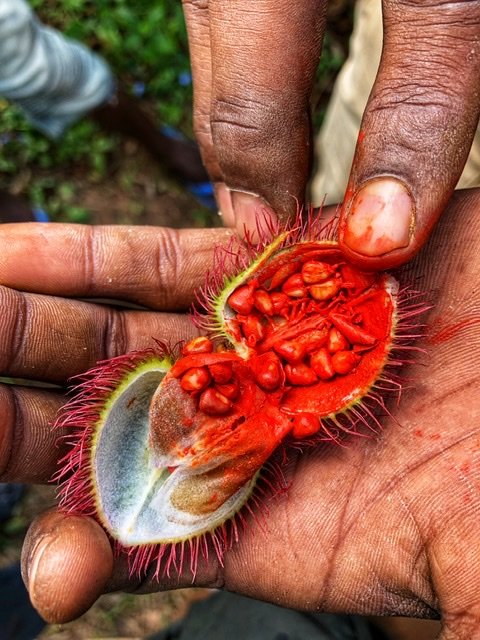
A very popular activity to participate in from Stone Town is a spice tour. Since there’s no other place in the world we’ve seen such a thing, we felt it was obligatory to take a peek at the spices and fruits the Dole farm (one of many) had on offer. The half day tour was $15/person, including lunch and very well worth the splurge!
One of the most interesting things we witnessed was the Annato seed known as the lipstick tree, which are used Annatto as an industrial food coloring to add yellow or orange color to many products, as well as for red body paint and lipstick.
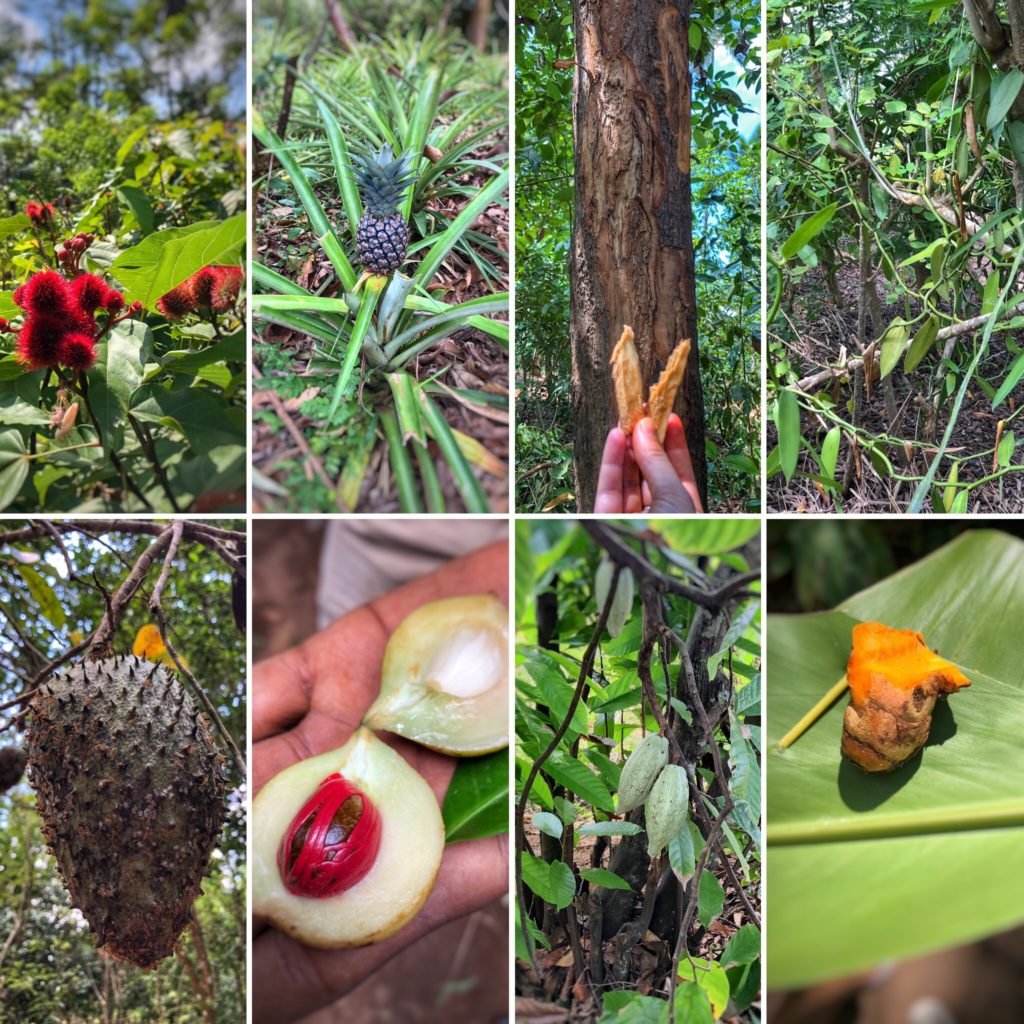
- The outside of the annato or lipstick plant
- A miniature pineapple. So cute!
- A cinnamon tree, known as the Queen of the Spices. It was fascinating to pull the bark off tree and inhale the aromatic scent of one of our favorite spices
- Vanilla, the world’s most expensive spice after saffron and cardamom, only flowers once a year. Because the bees aren’t necessarily around at the time, the flowers are mostly pollinated by hand by women who go around from flower to flower, fertilizing them by pressing the stamen and pistil together.
- The graviola, otherwise known as the soursop, has an aroma similar to a pineapple but kinda of tastes like a cross between strawberries and apples
- When you walk up to a nutmeg tree it’s a bit surprising because it looks like apricots. When you open the fruit, the flesh is kinda useless, but the pit tucked under the pretty red webbing is pure gold. Nutmeg, a favorite for cakes and coffees, is also supposedly an aphrodisiac for women.
- Cacao pods for making chocolate
- The little Turmeric tuber straight from the ground. This power spice is a potent anti-inflammatory and antioxidant and may help improve symptoms of depression and arthritis, as well as prevent heart disease and cancer.
Other commodities we got to experience included coffee beans, ginger, coconut & coconut water straight from the source (mmmm….) and clove, which was once the “King” of the spices. Zanzibar was once the world’s largest producer of clove. Yes, here’s where that delicious, aromatic Tanzanian coffee is born.
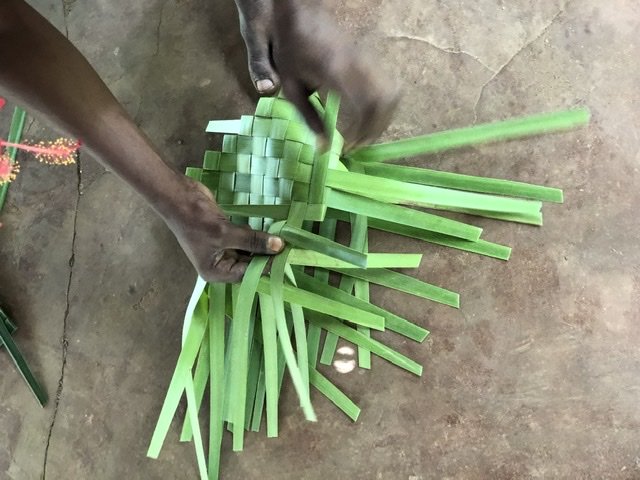
The spice tour also included lots of clever crafty little gifts made for us by our guide from banana leaves and flowers. Mandy was so decked out she became a distant cousin of the Statue of Liberty!
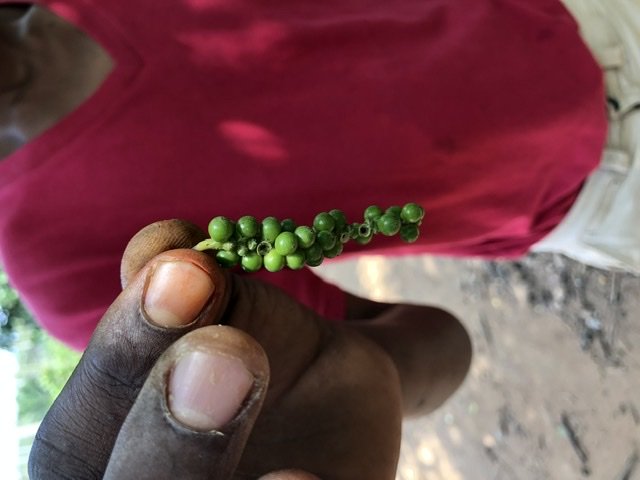
On nearly every single table worldwide. This would be black peppercorns in its original form.
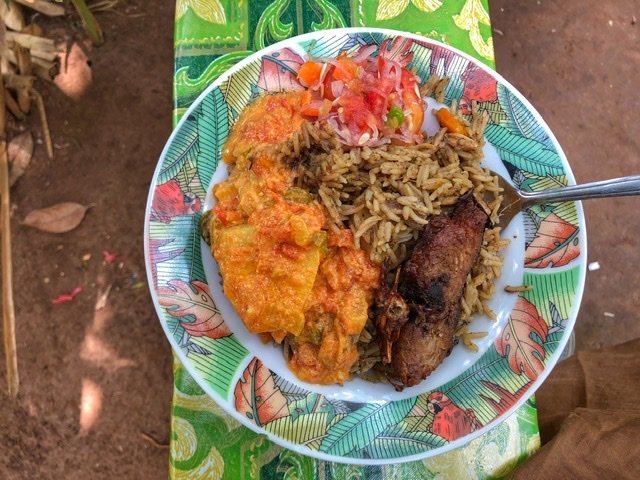
The lunch on our spice tour was overloaded with, you guessed it…an explosion of spices. Afterwards we picked up some cinnamon as well as “Zanzibar Spice Mix” which can be used to flavor just about everything. Perfect for traveling!
Visiting a local school. These kids clearly see a lot of foreigners because they weren’t all that interested in us, although one did throw a spitwad toward us at the window. Nice.
Later than day, we visited the somber historic slave market and prison quarters in Stone Town. We learned that although European illustrations depict the slave trade carried out by predominantly Arabs, in fact most raids were carried out by African warriors loyal to local warlords to be sold to Arab and Swahili coastal traders.
These were the cells the slaves were held in before shipment. 50-75 women and children were held in them for weeks and same for the men. They were fed and given water very infrequently and were forced to defecate on the floor so it naturally became infested with disease which ran rampant through the small quarters.
And after the 1860’s (due to the British involvement in trying to abolish slavery) for those that survived, they were shipped in disguise overseas under the deck of a ship where they were chained together back to back by the hundreds and forced to sit in their defecations for days on end. The torture these people went through is beyond inhumane.
Another disturbing fact is that in the early 1800’s, the US became Zanzibar’s largest exporter of ivory. 75% of this ivory made its way to Connecticut, where entire cities were built to produce products made from ivory. Five Africans died or were enslaved for every tusk that reached the coast for export. Hope those piano keys and billiard balls were worth it…
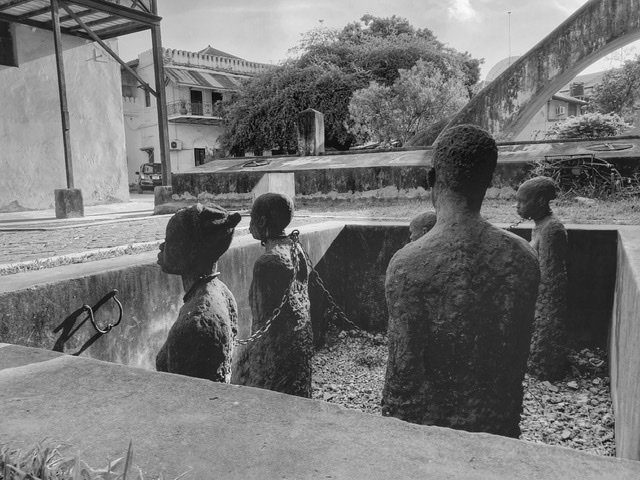
This memorial honors the people who lost their lives to the slave trade. The former slave market was converted into the museum. Up to several hundred slaves would be available for sale in a day. The market was also a place for entertainment where people would stroll through to discuss “the merchandise.” The stronger the slave was, the more he/she sold for. Children were usually thrown is as a BOGO “bonus.”
Although the information and images are incredibly disconcerting, what’s more so is the information presented in the museum on the 21 to 36 million people suffering modern day slavery, which is more than the entire number seized in the African slave travel, and affecting every single country on earth today. Slavery has actually increased significantly in the 21st century but is now more person to person, including bonded labor, forced labor (trafficking) child slavery and early/forced marriage. It’s just awful.
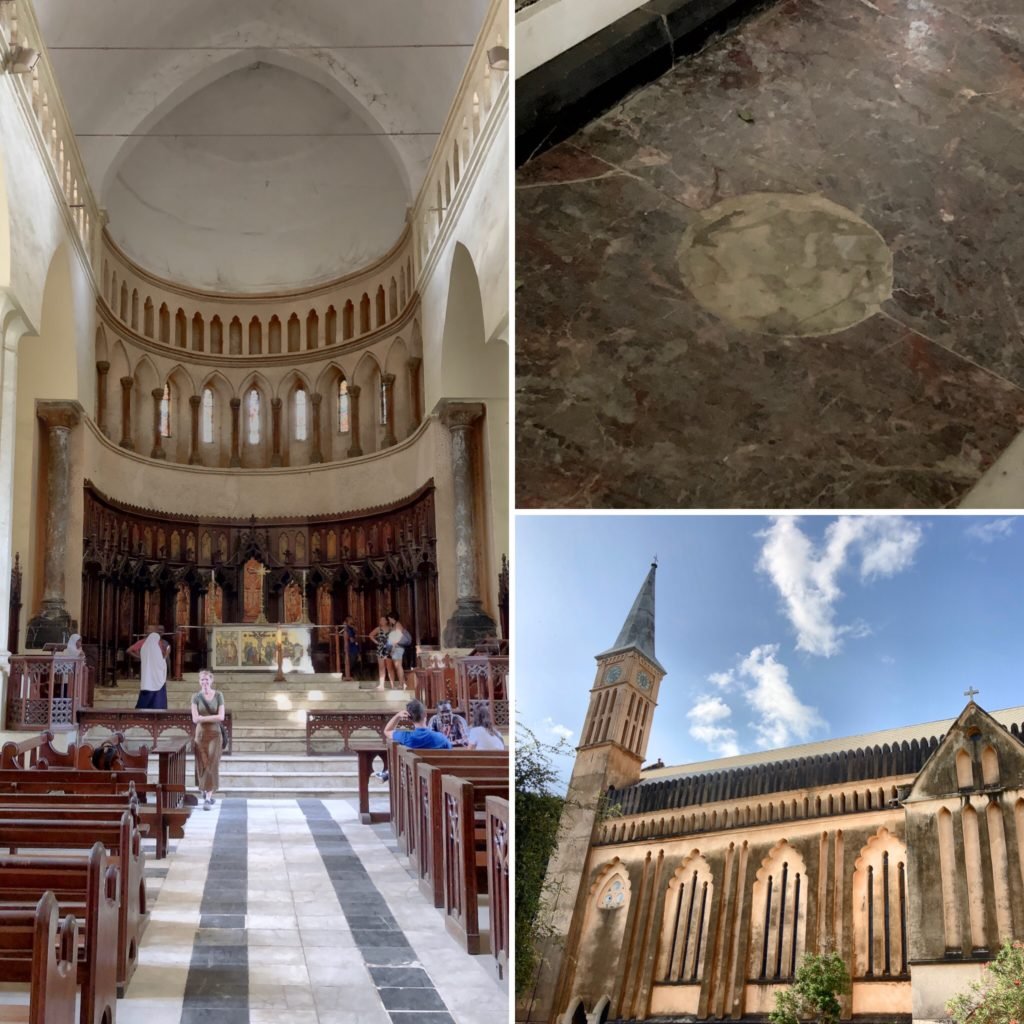
The Anglican Cathedral was built on the site of the former slave market after slavery was officially abolished in the 1870’s. The inspiration to build this cathedral was from David Livingstone, whose call to compassion the missionaries answered in 1864 when they settled on the island. One of the stained-glass windows is dedicated to his memory, while the cathedral’s crucifix is made from the tree that grew where his heart was buried in the village of Chitambo in Zambia. Inside the cathedral, the altar reputedly marks the spot of the whipping tree where slaves were lashed with a stinging branch to test “how tough they were.” It’s a moving sight, remembered by a white marble circle surrounded by red to symbolise the blood of the slaves. (Lonely Planet)
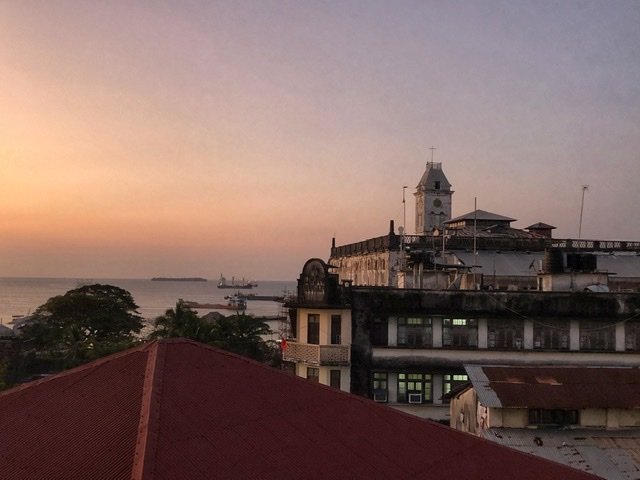
Sunset over the House of Wonders, the tallest building in Zanzibar and a palace built in 1883 for Barghash bin Said, second Sultan of Zanzibar. It was named “House of Wonders” because it was the first building in Zanzibar to have electricity, and also the first building in East Africa to have an elevator.
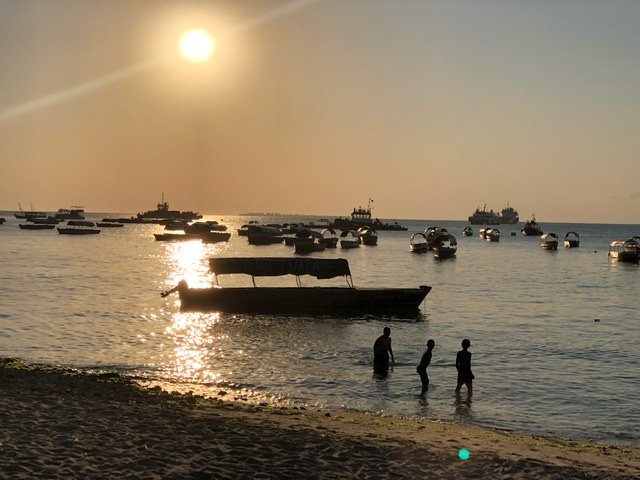
Our last night in Zanzibar…sunset over Stone Town.
From Stone Town we took the $35/person ferry (foreigner price, naturally) to the capital of Tanzania, Dar es Salaam, which is merely 23 miles away, yet 2 hours by dramamine-requiring sea. Off to the mainland…

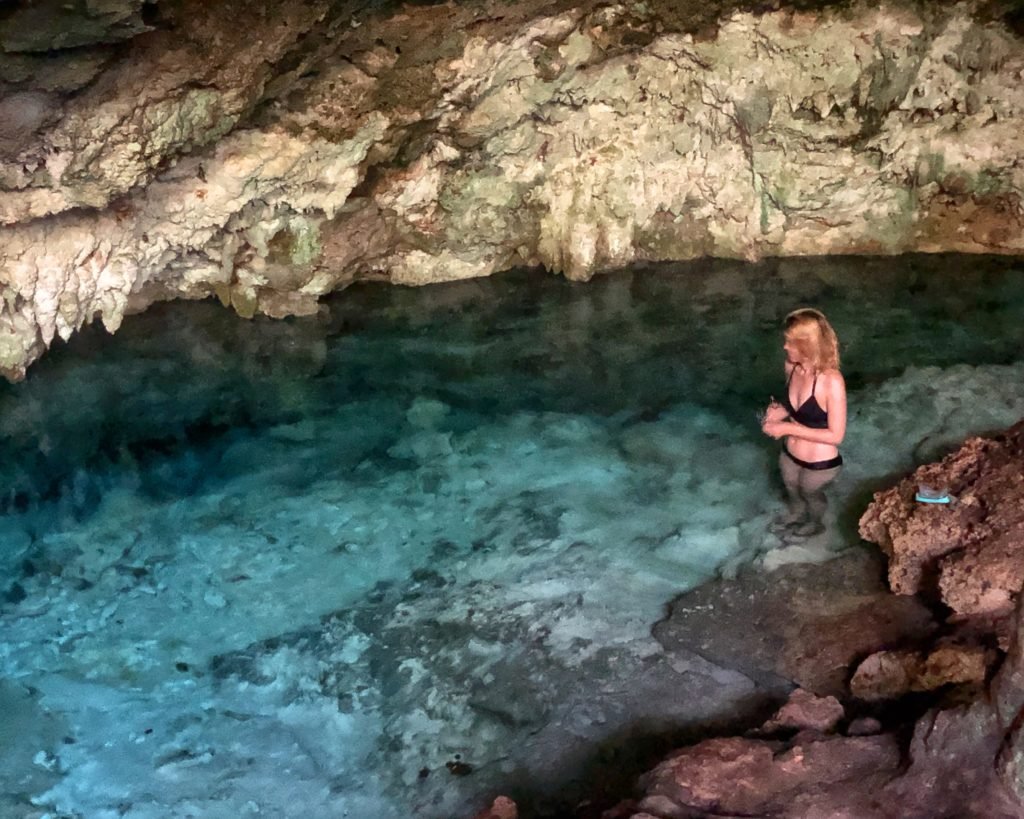
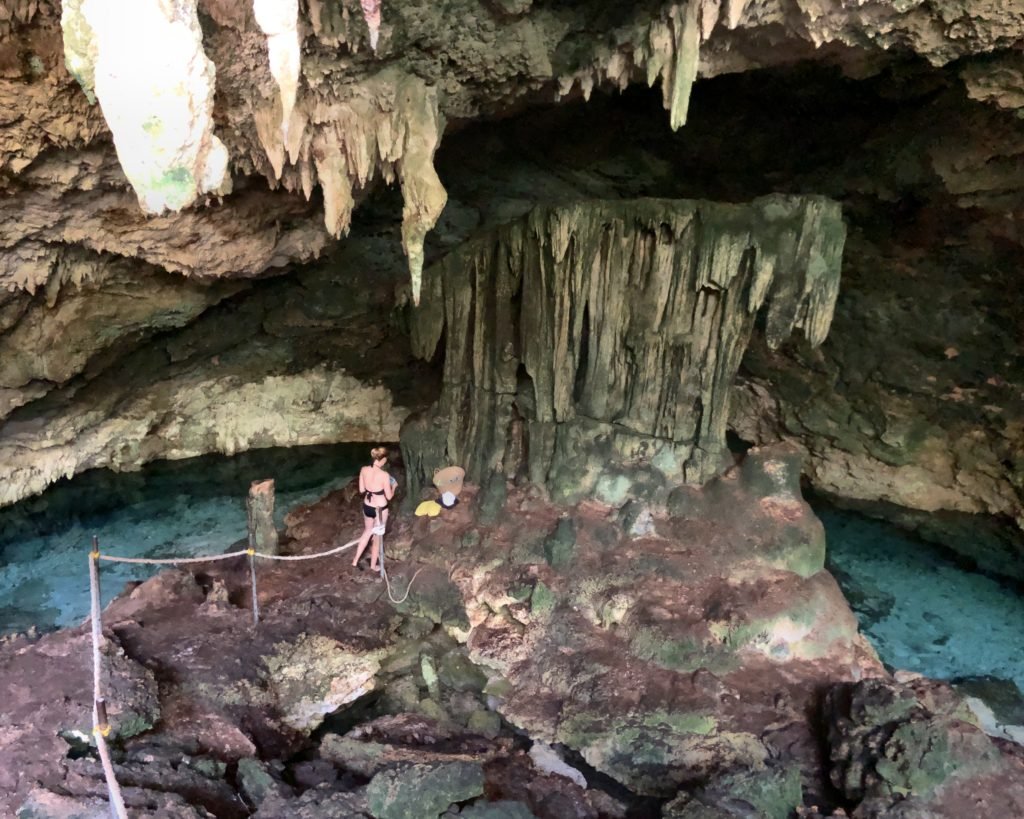
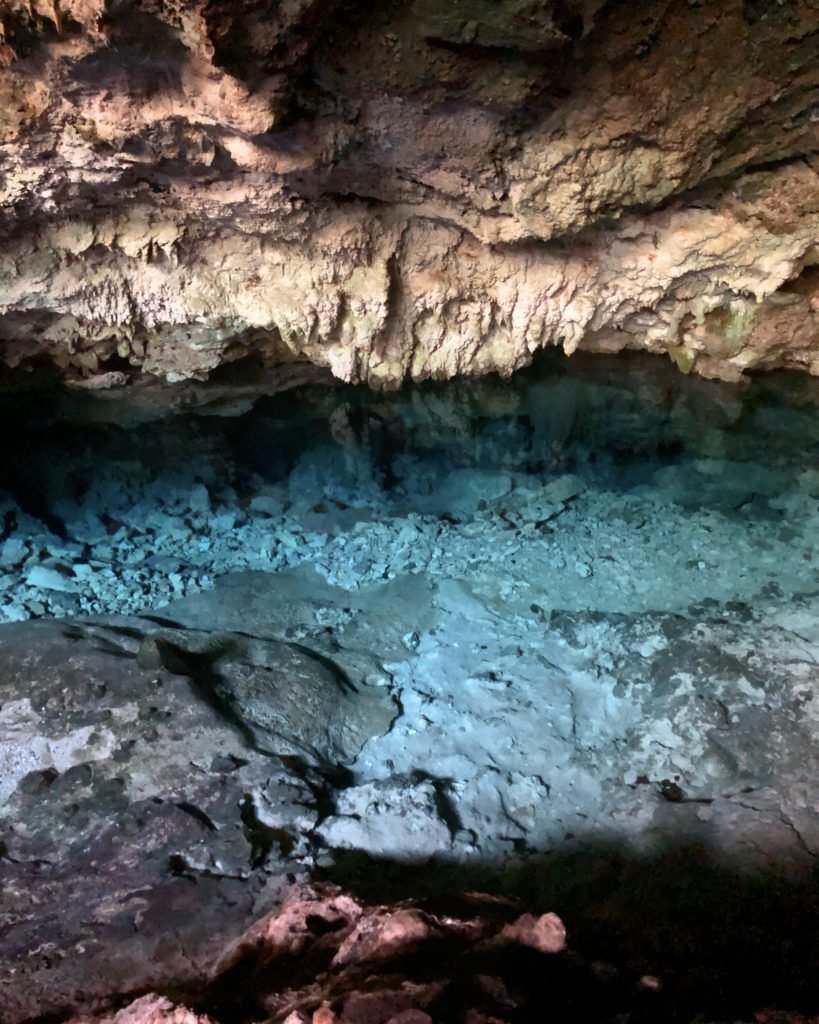
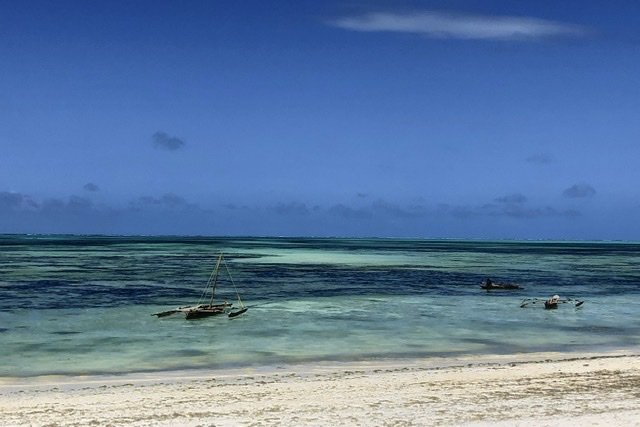

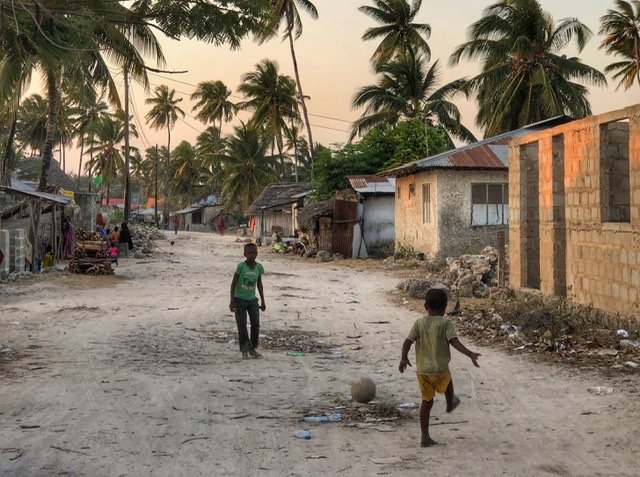
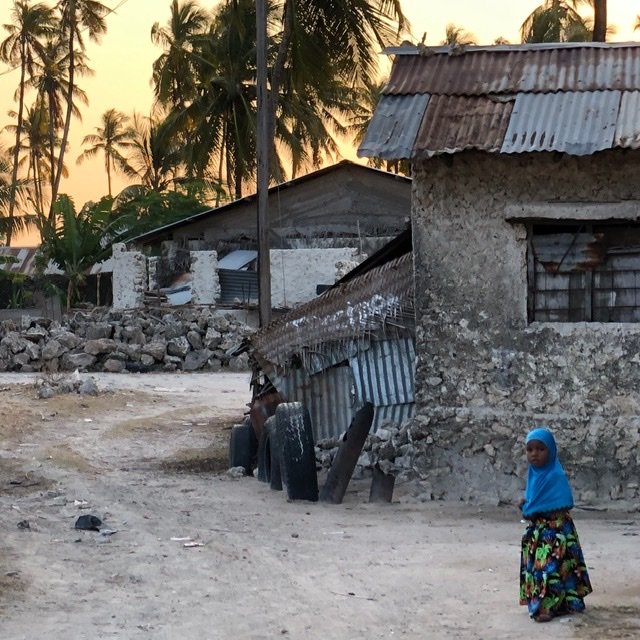
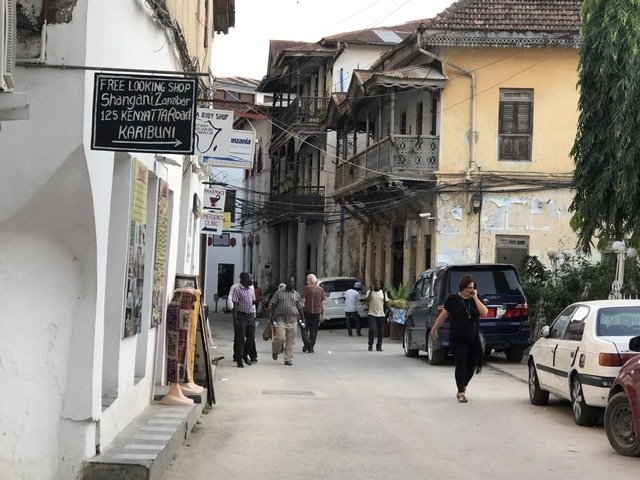

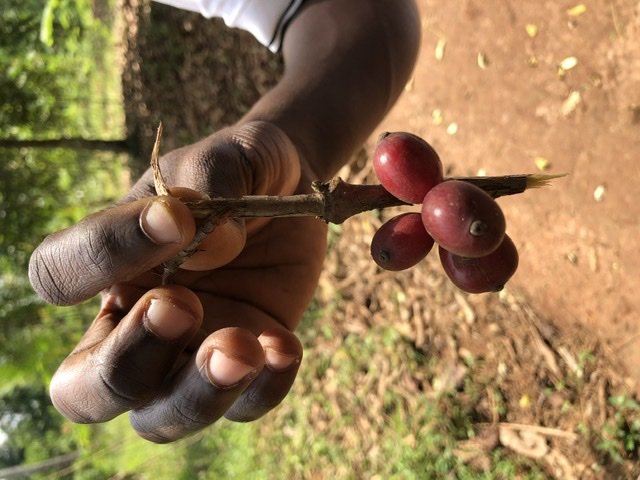
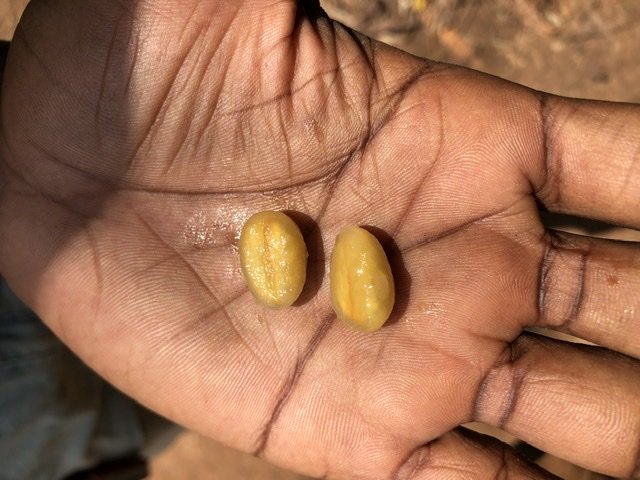
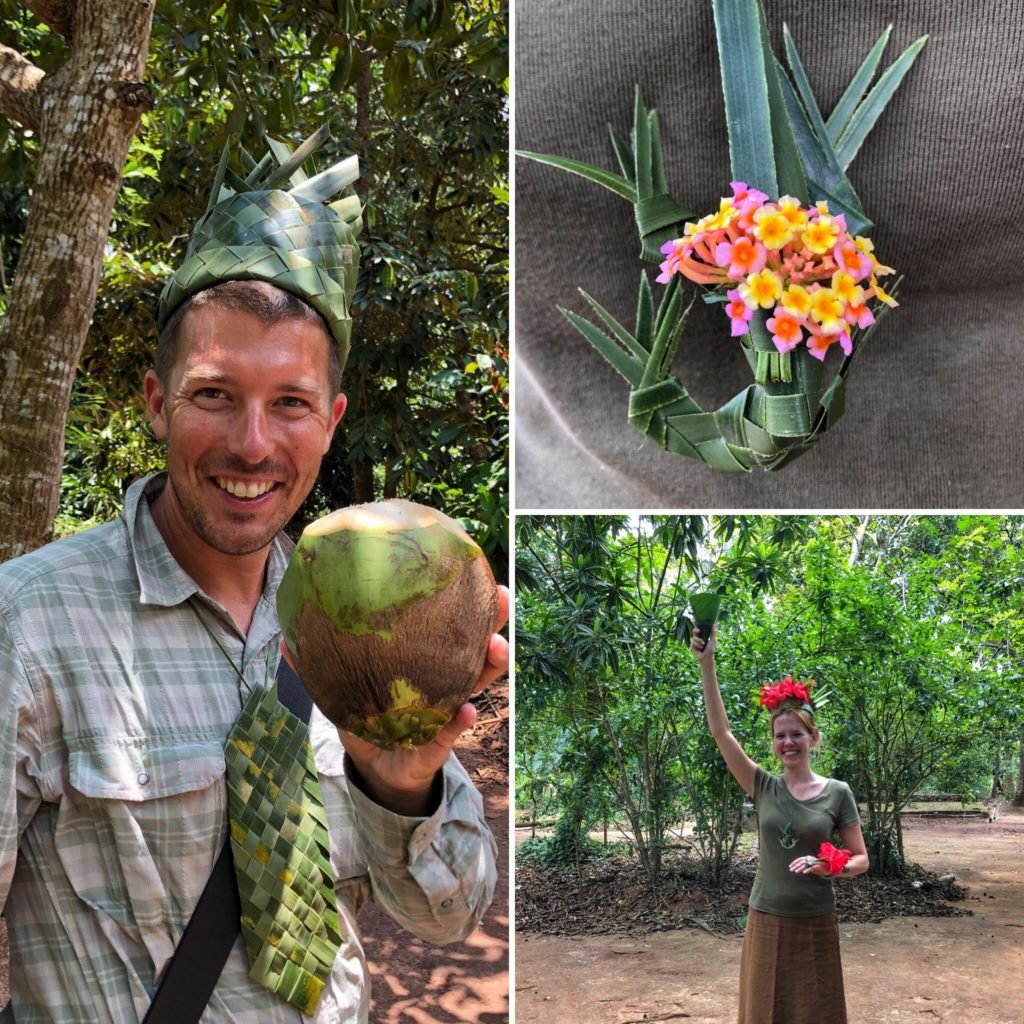
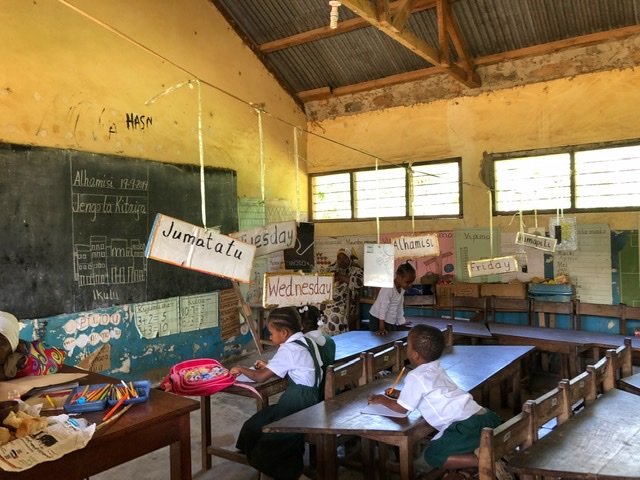
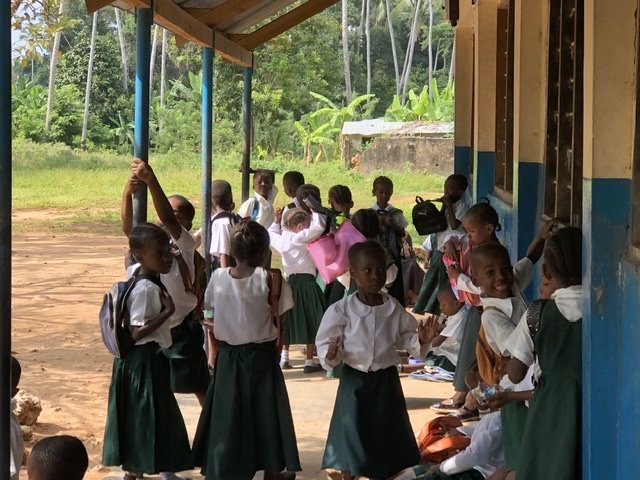
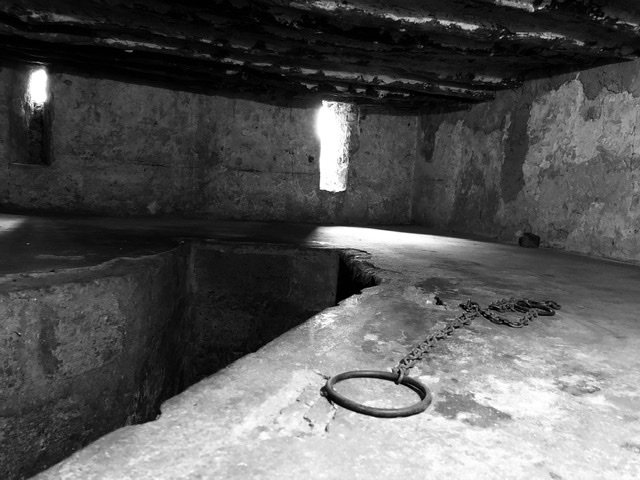
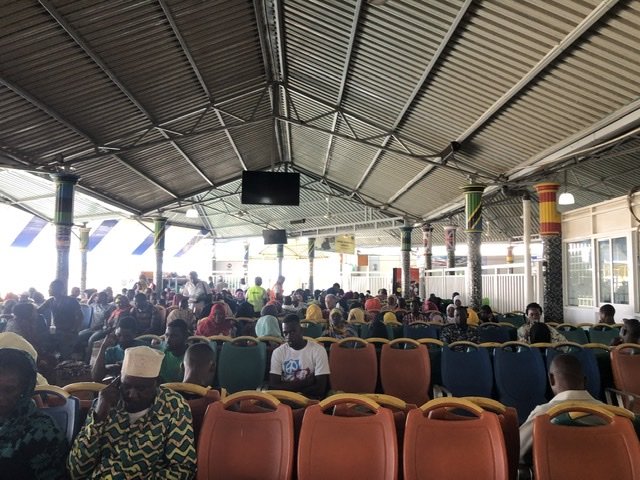
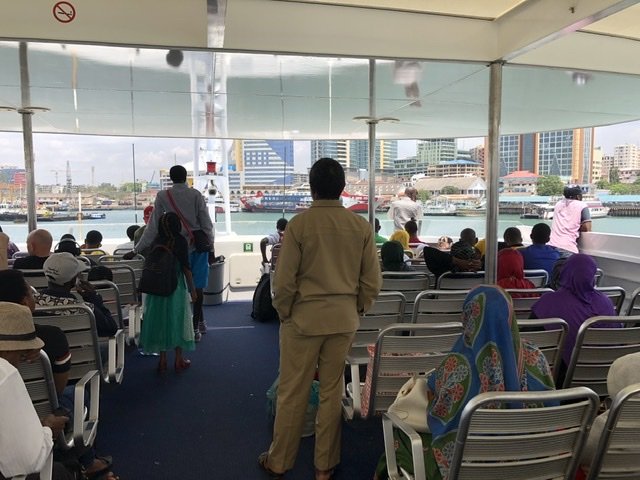
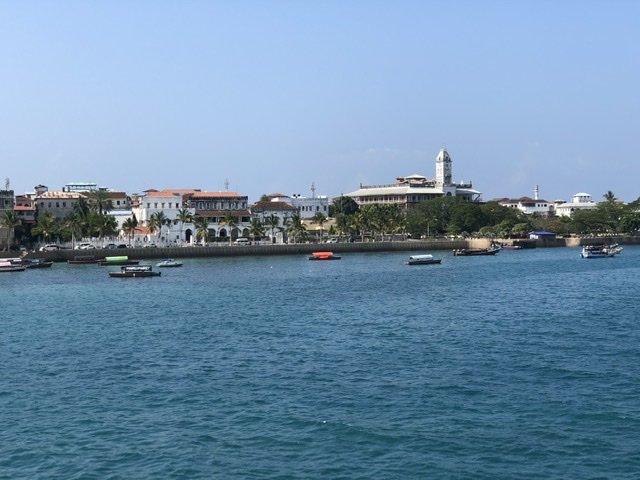
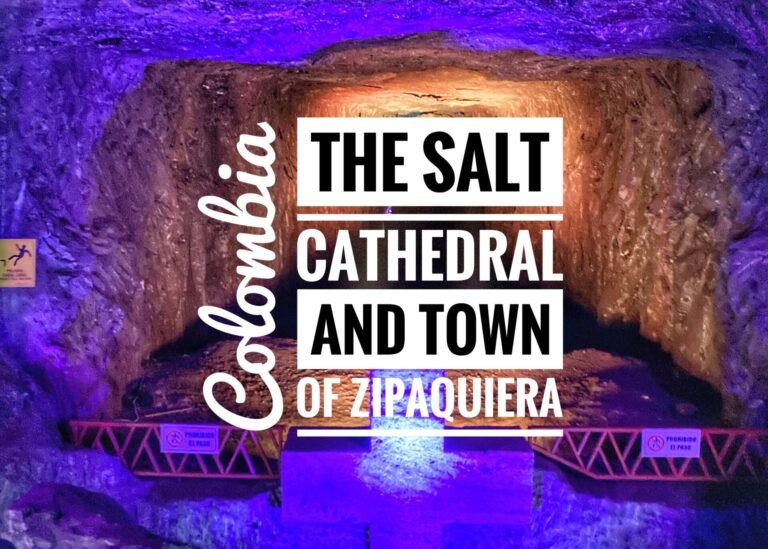
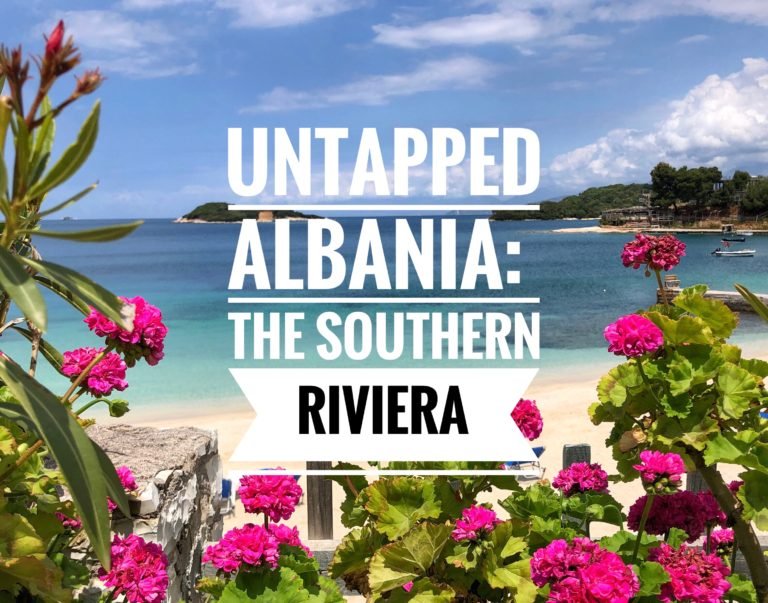

Wow, so impressed with the writing, pictures, wonderful descriptions, history and detail. Truly enjoyed reading this and being able to more accurately understand your days. Kudos to both of you!!!
Thank you so much for reading and for your comment 😉 Hope you enjoyed the booty-shaking as well…hehe.
I really look forward to reading all of your posts and blogs!!
Thanks Amy:) We never know if people are actually reading the blog posts so its good to hear you are!
Hi Mandy & Greg, thanks so much for sharing so much of your experiences! What a lovely writingstyle you have! I enjoyed every word (and picture). Roos and Bess are now experiencing Kenya together. i’m back in The Netherlands, Haarlem. And as Lonely Planet mentioned: one of the top 2 countries to visit. Remember: there’s always our invitation for you guys:). Enjoy life, with love, Karin xxx
Hello Karin,
Thank you so much for the comment and taking the time to read our post 🙂 I know you’re probably living vicariously through your daughters now as well. Meeting you and your girls was such a treat. I’m so glad we got to share our safari together. Thanks on the invite to Haarlem. We will definitely keep in mind next time we’re in the area. Take care of you. XO Mandy & Greg
Mandy, we are so fascinated by all you two have been writing and photographing. Had almost given up that we would see your blogs and all of a sudden — here they are. Such intrepids. Wonderful.
Patti!! So lovely to hear from you. How the heck are you?! I miss your smiling face! Yes, it took us almost 8 months to iron out the kinks with our website, but we’re getting it rolling now. I hope you’ve been getting our emails for a few months at least? Hugs, Mandy
Lovely recap as usual!
Oh yes we’re reading. I’ve been reading a lot of blogs in prep for my Sept trip and I like your style and level of info and fab photos. Though some aren’t loading very well – maybe they’re large and my fibre connection is a bit shit.
You have so far found something interesting that I haven’t read elsewhere in practically every article. And that’s the gold I’m looking for, the different things.
Hi Terri! You’re so kind! We love hearing that from people and I’m glad you see us as something different. It’s one reason we’ve actively chosen not to monetize. Thank you for the feedback on the photos also. Are you following us on Facebook as well? This is where we’re currently active. In Vietnam now and will be heading to New Zealand in December actually. Can’t wait to see your beautiful country for the first time 🙂